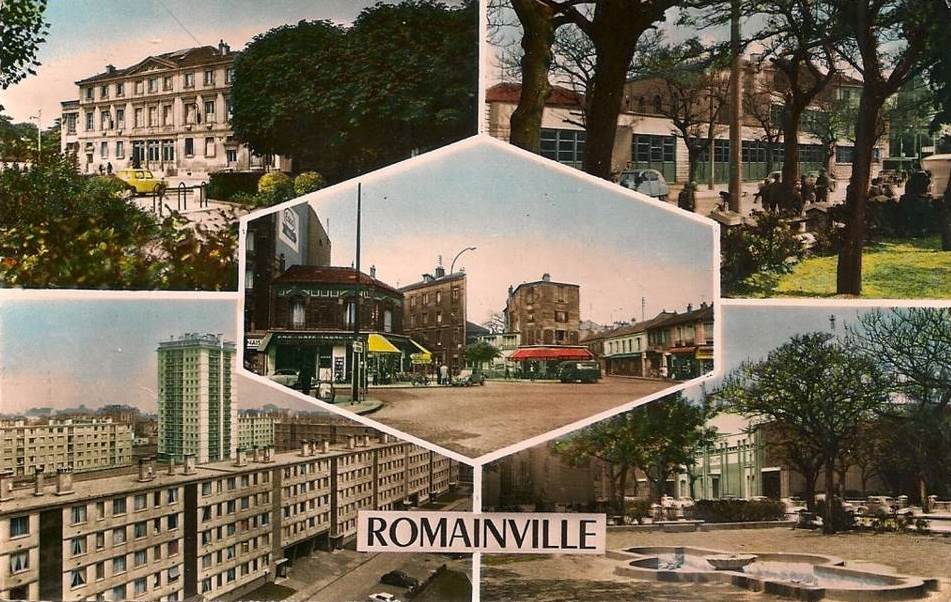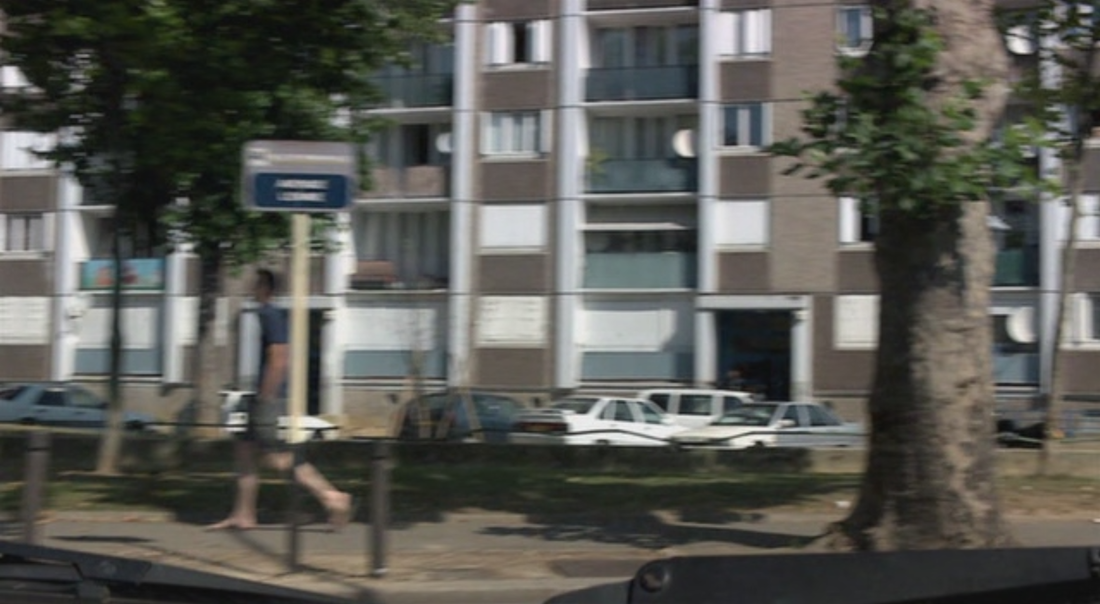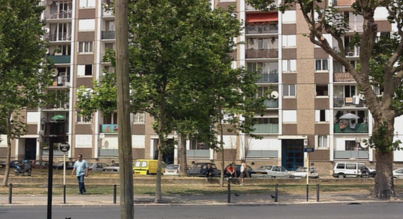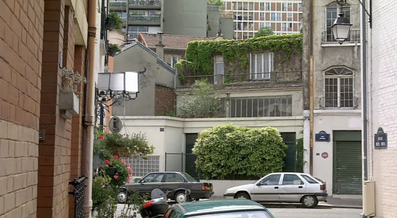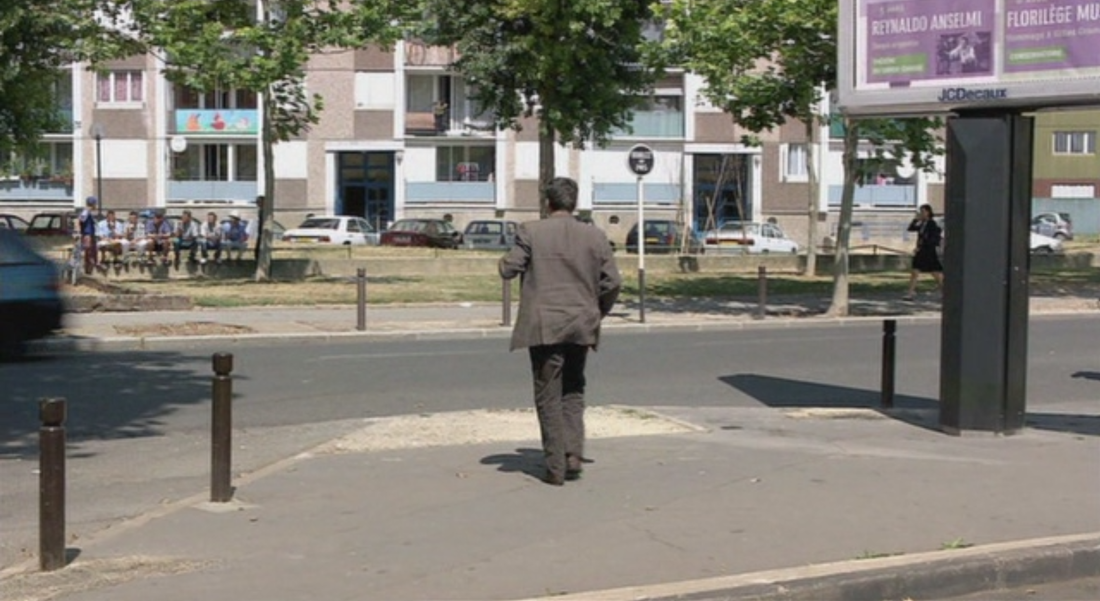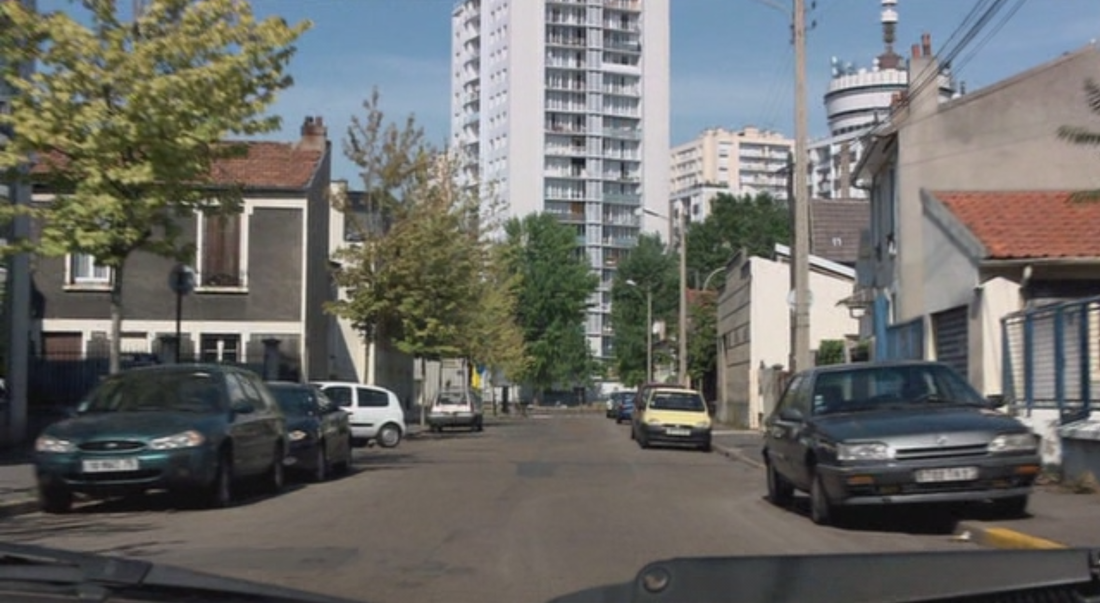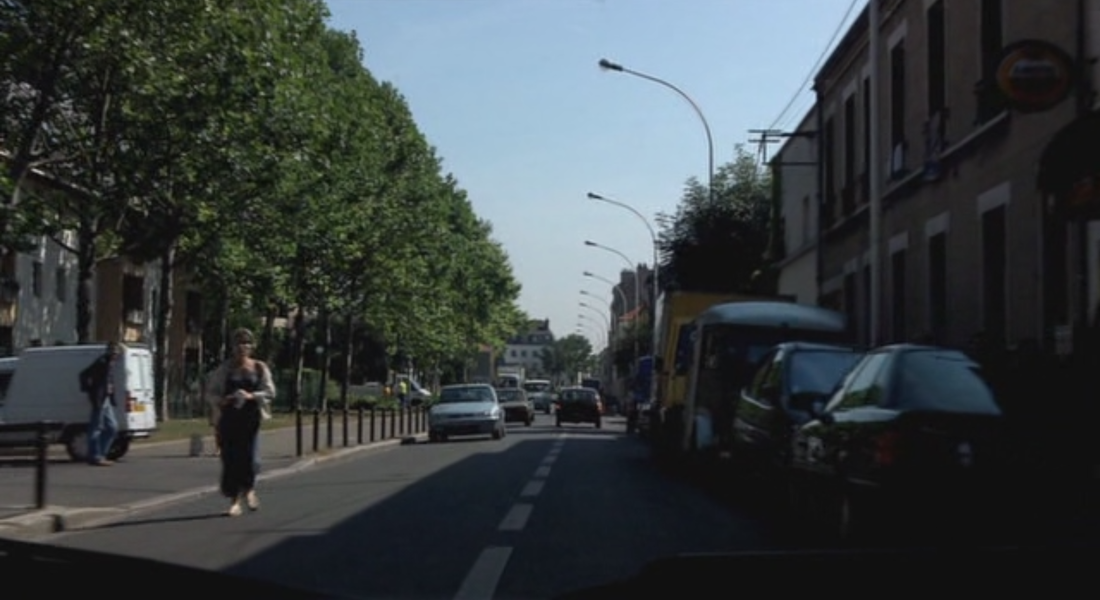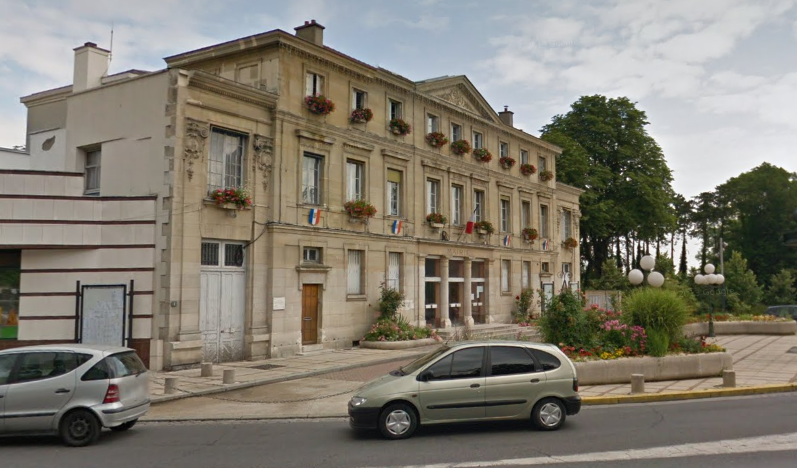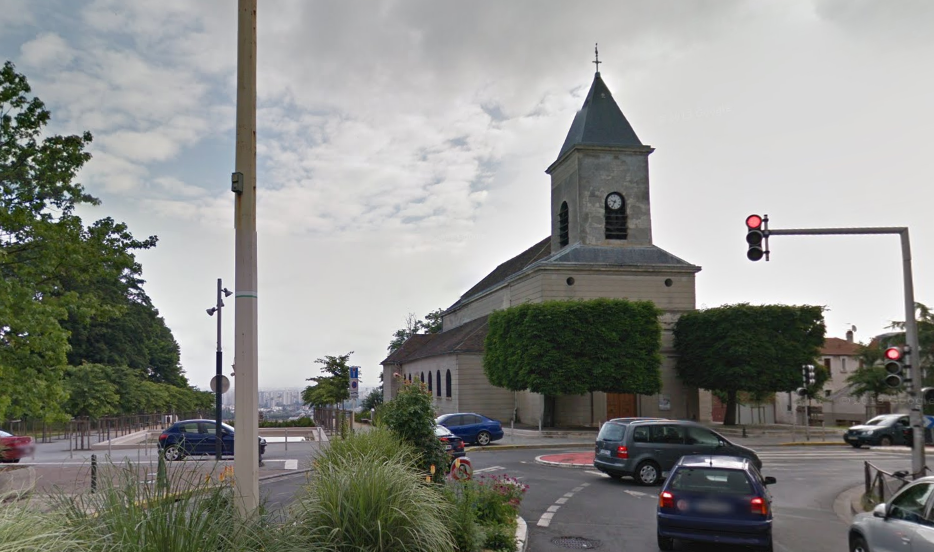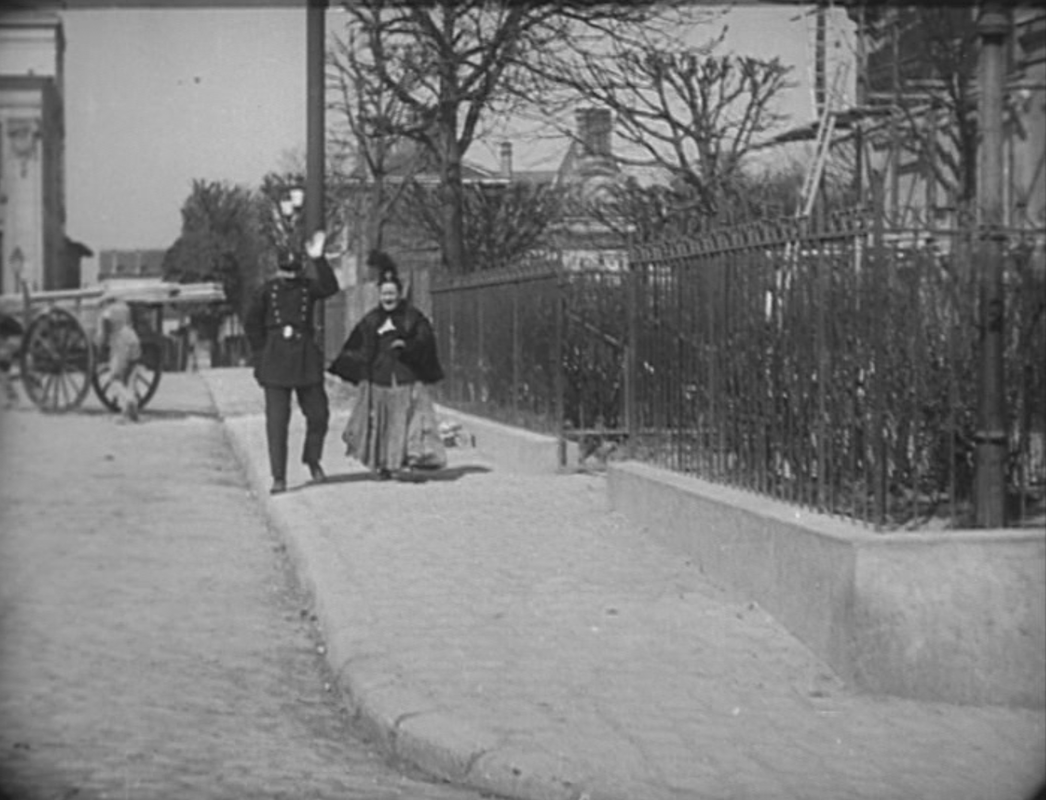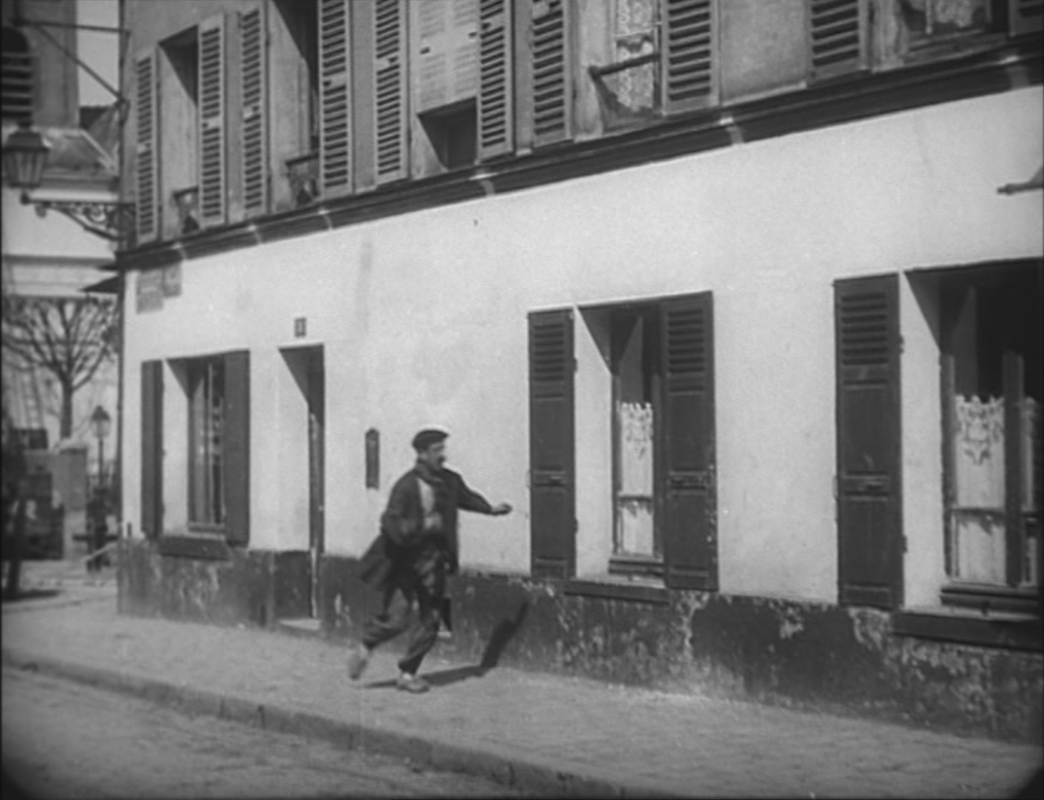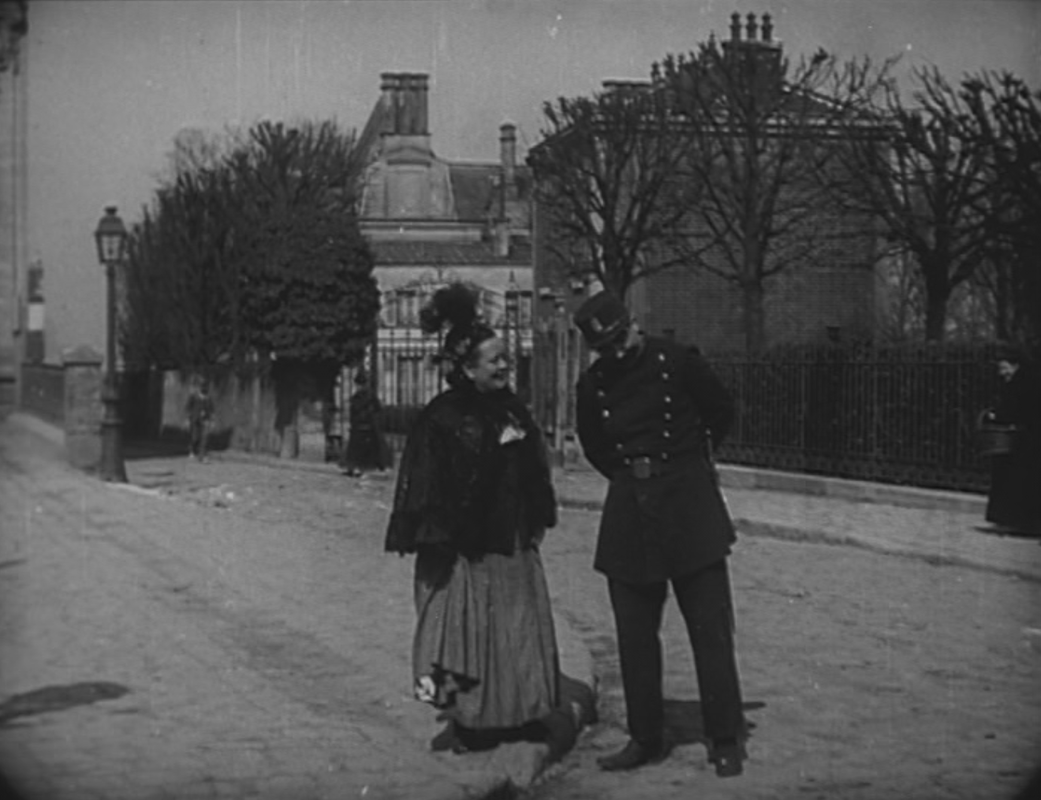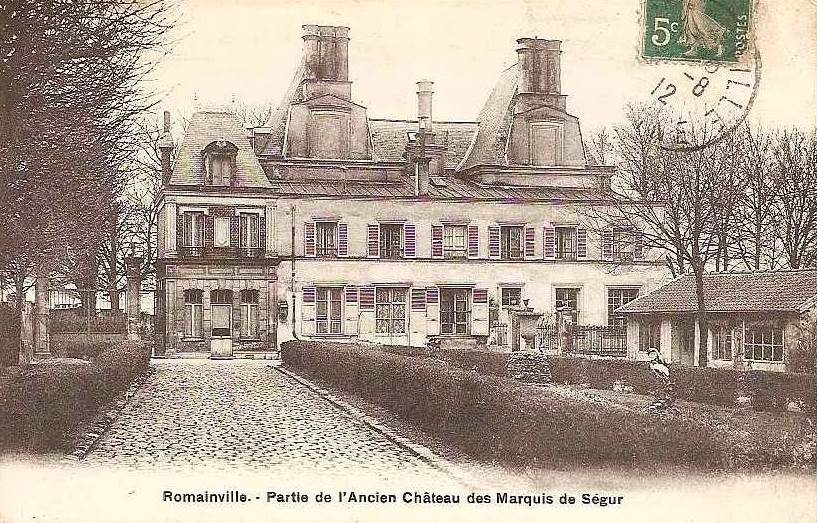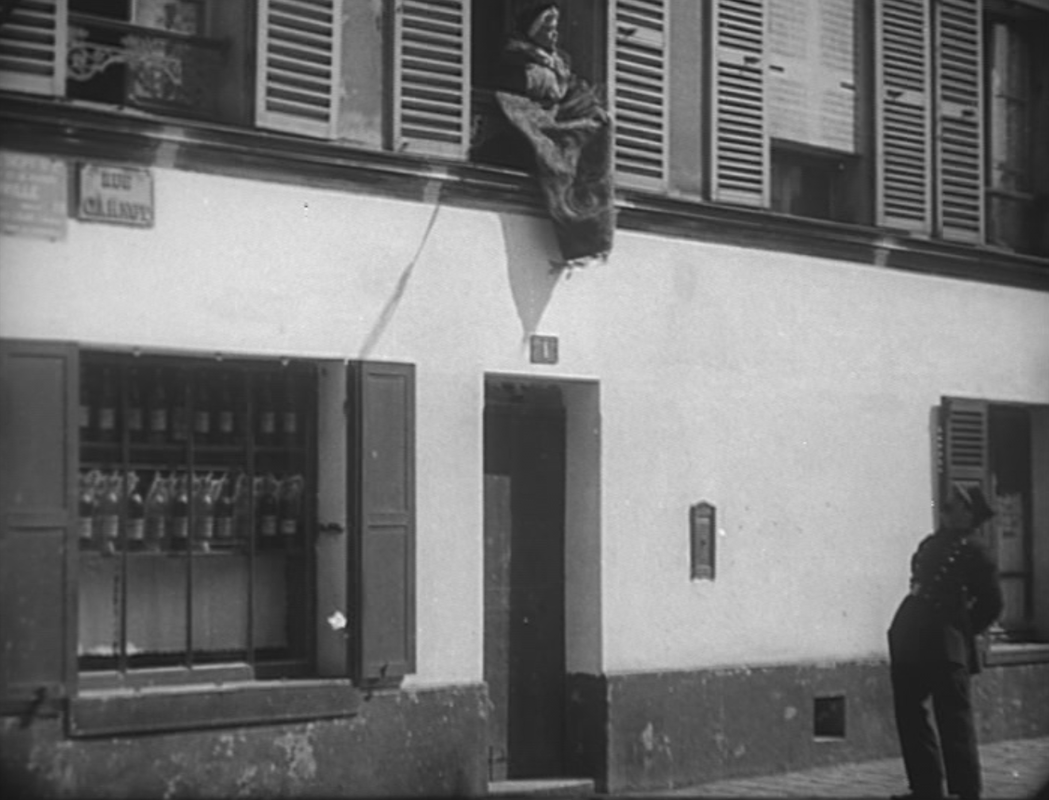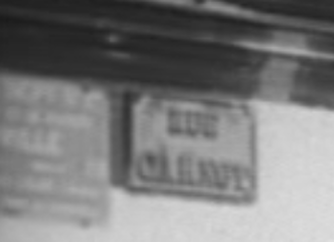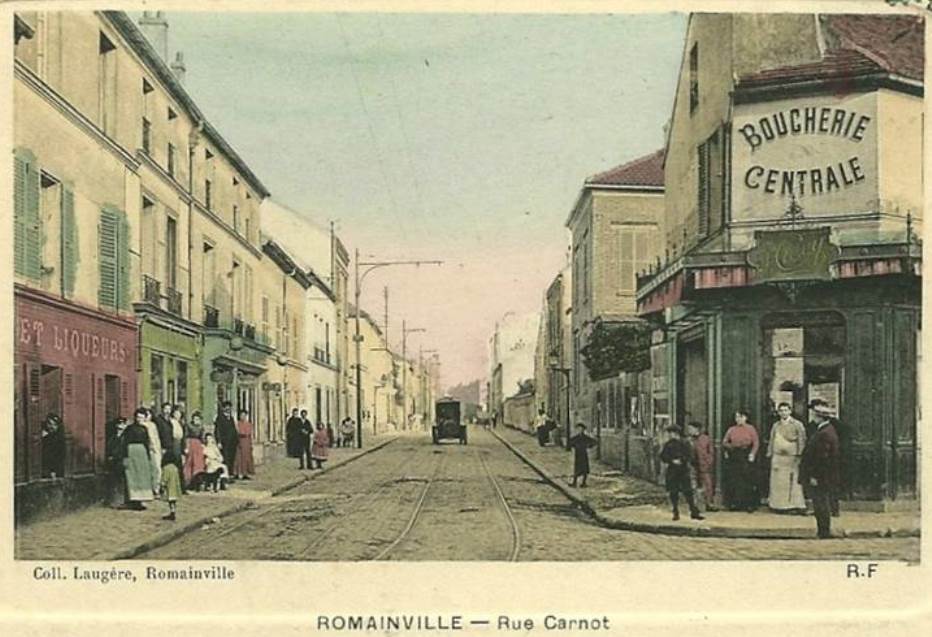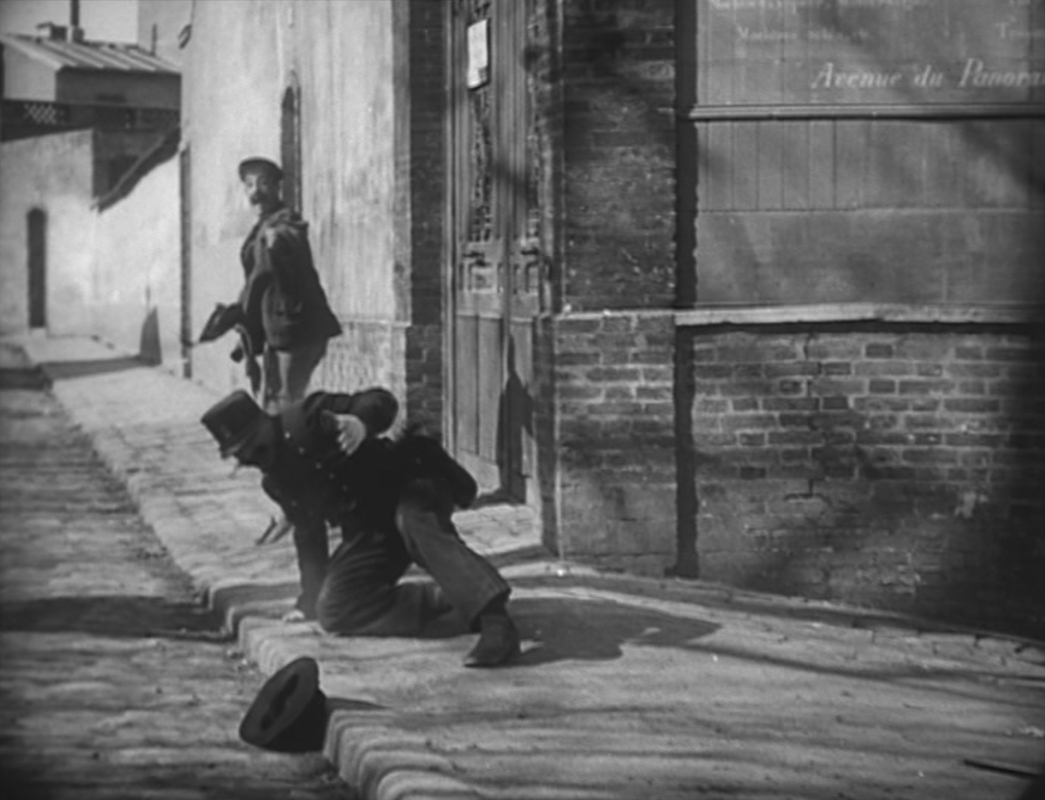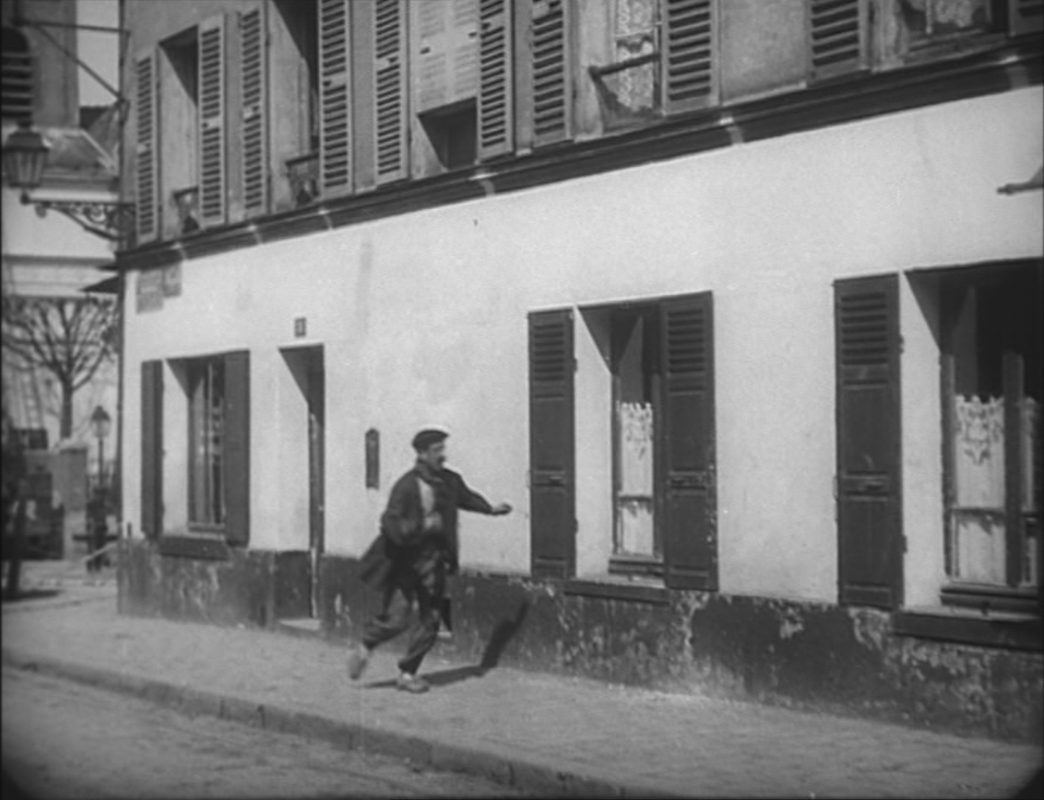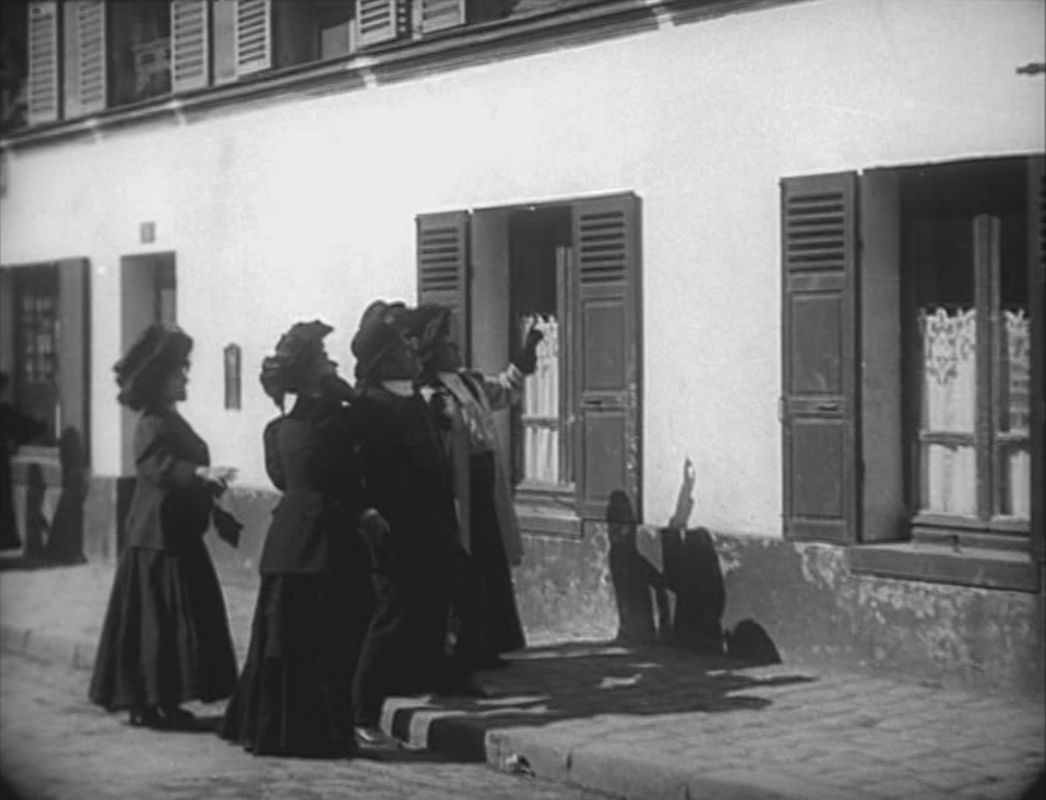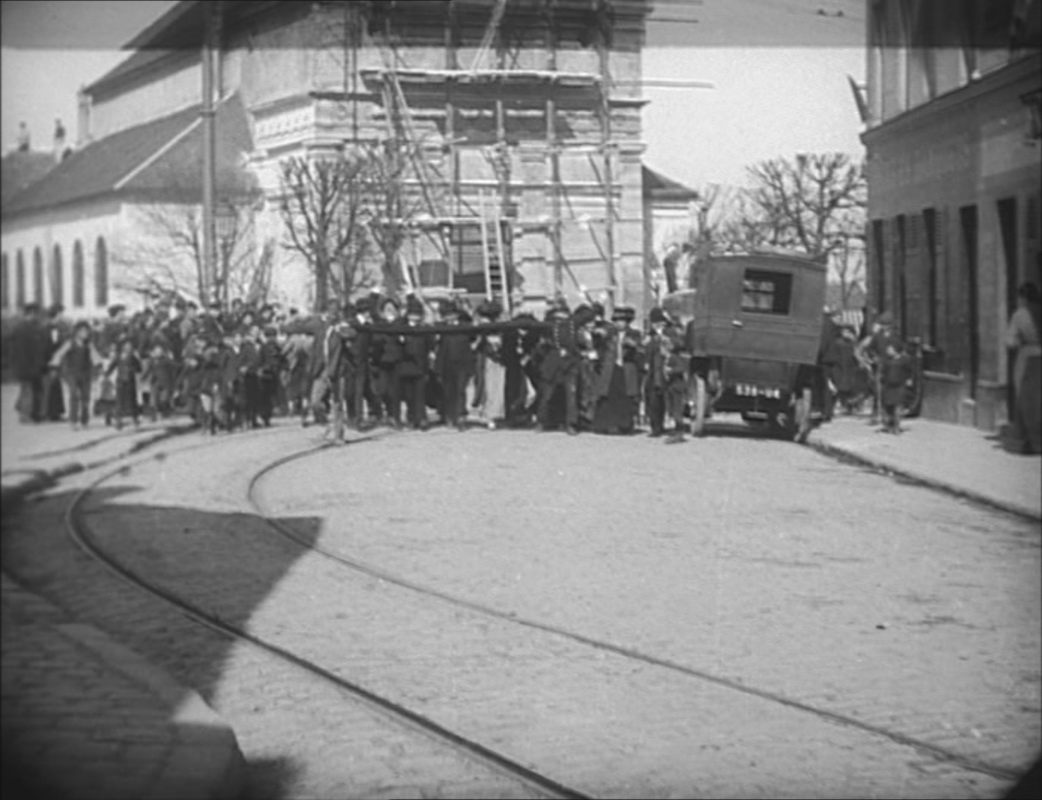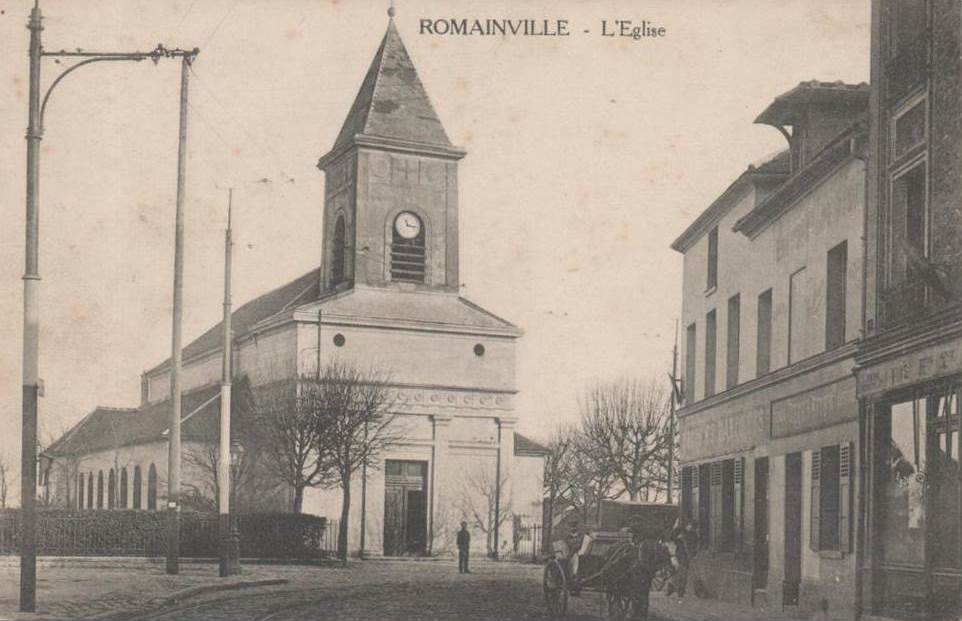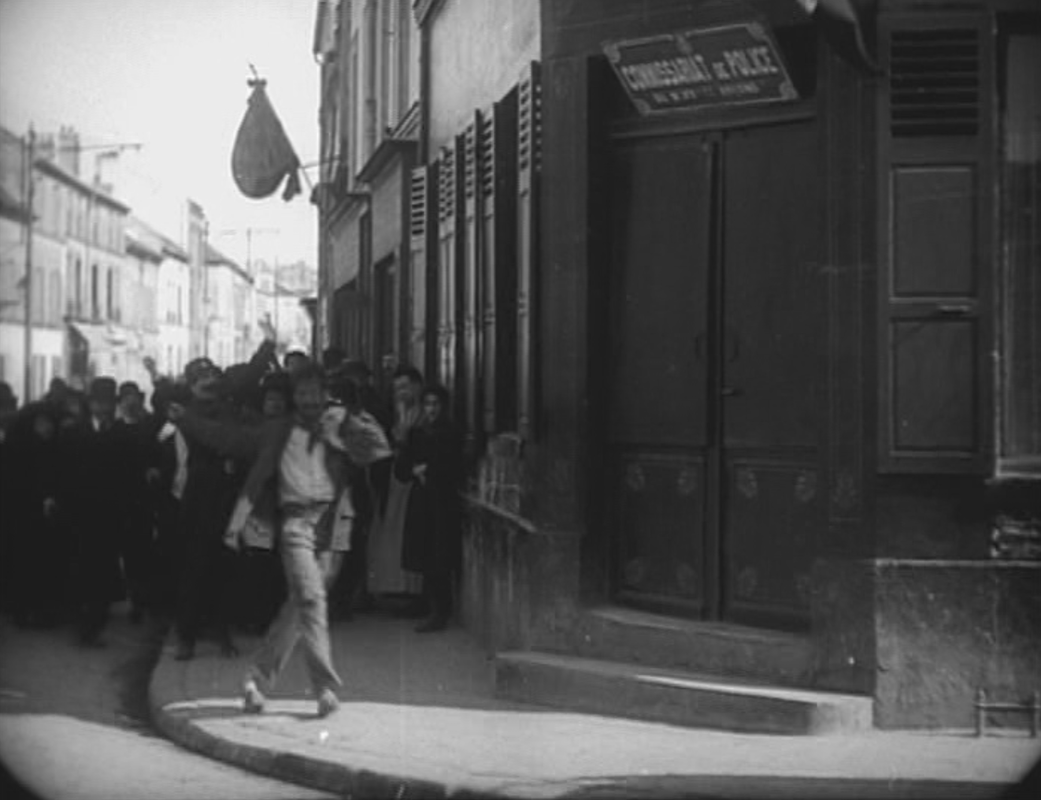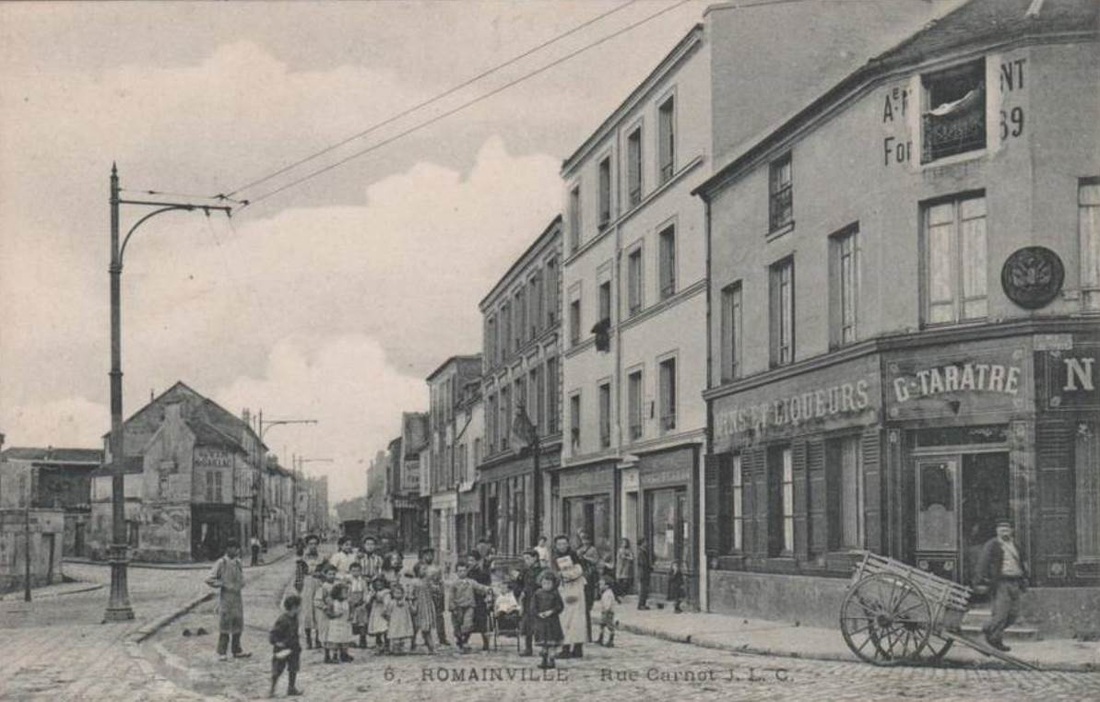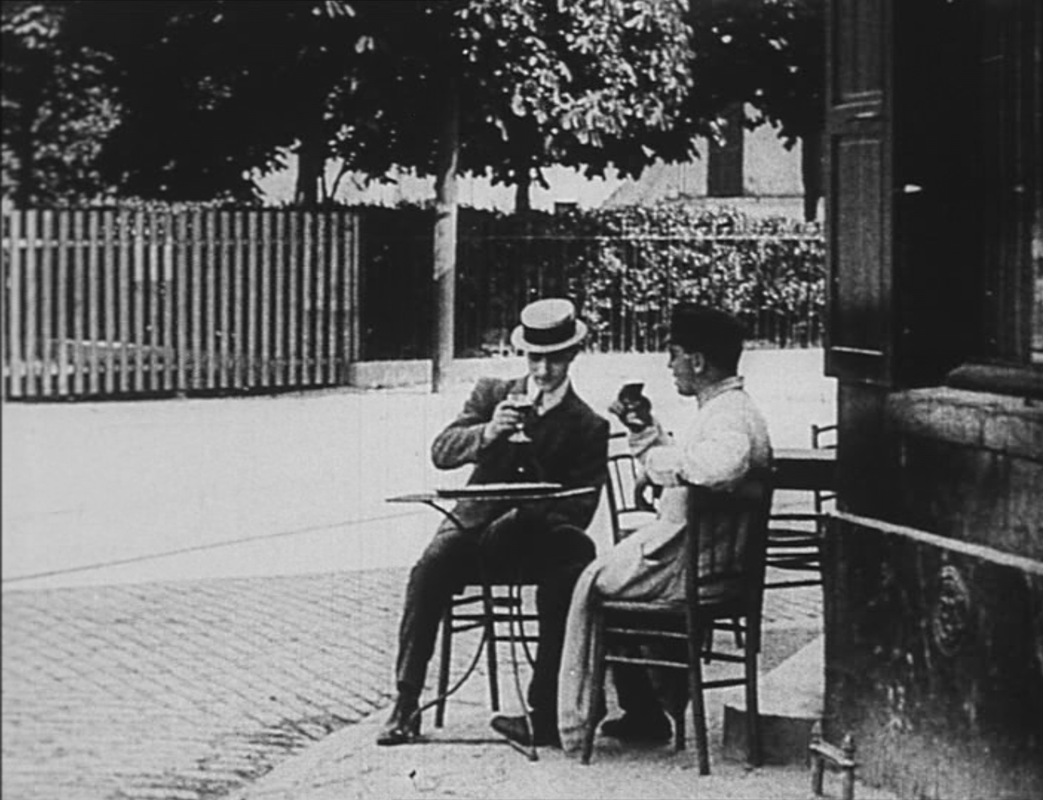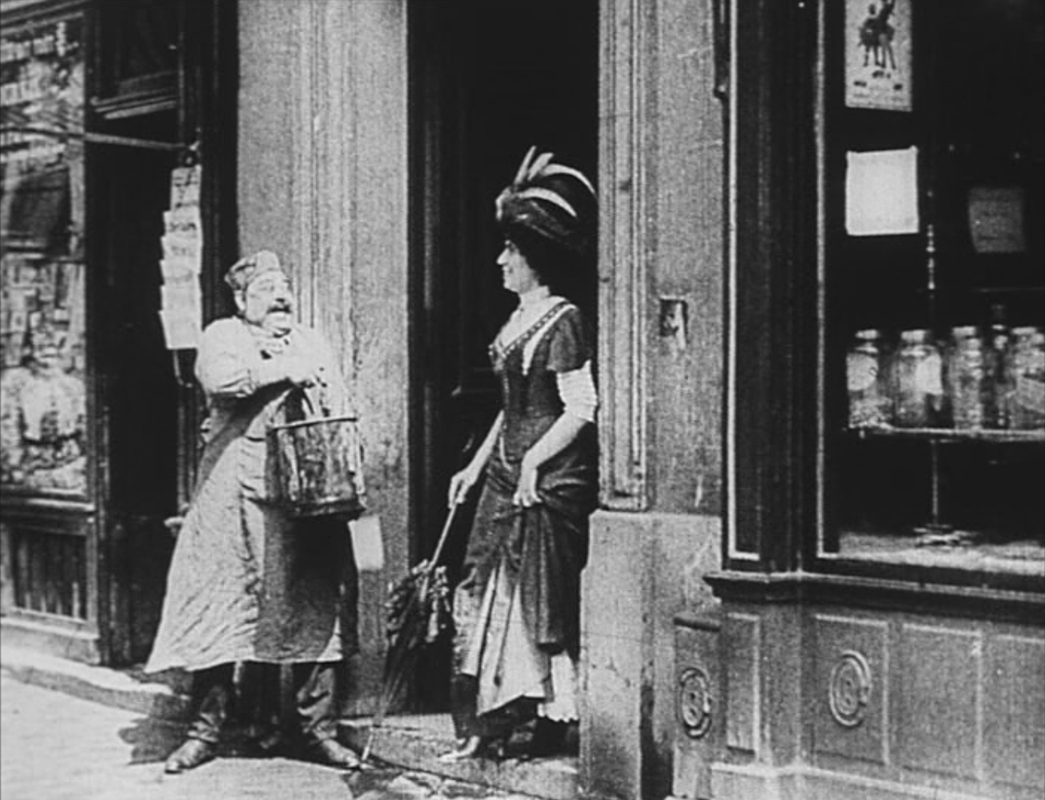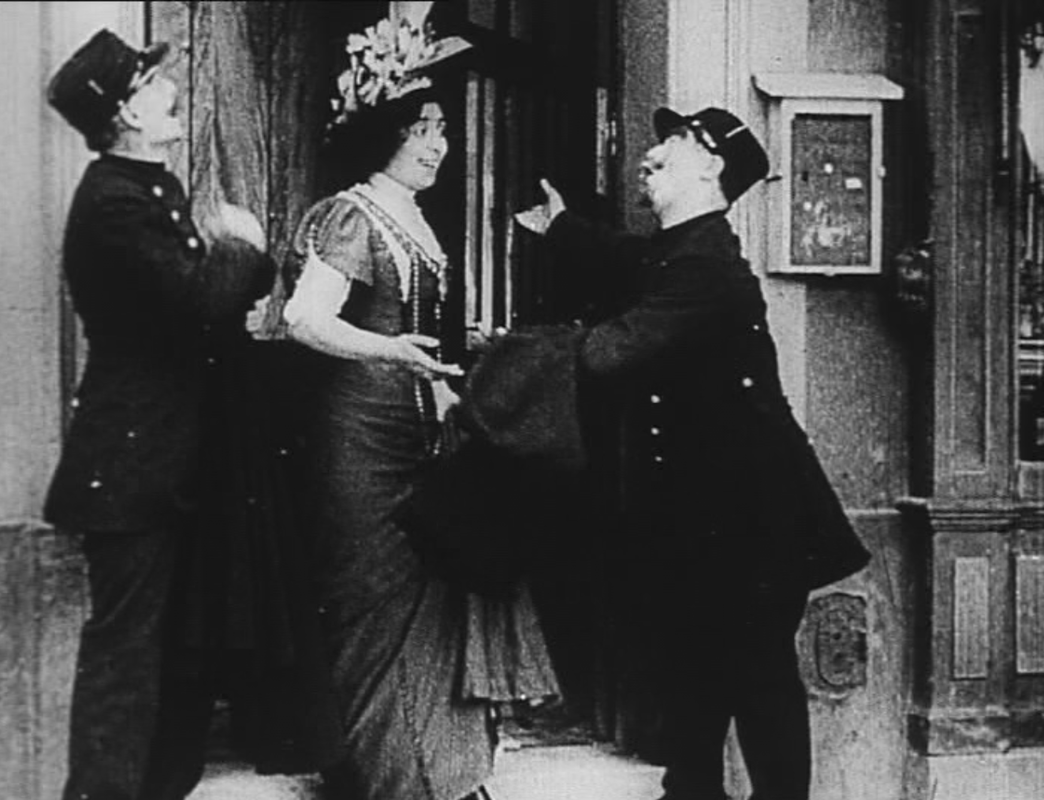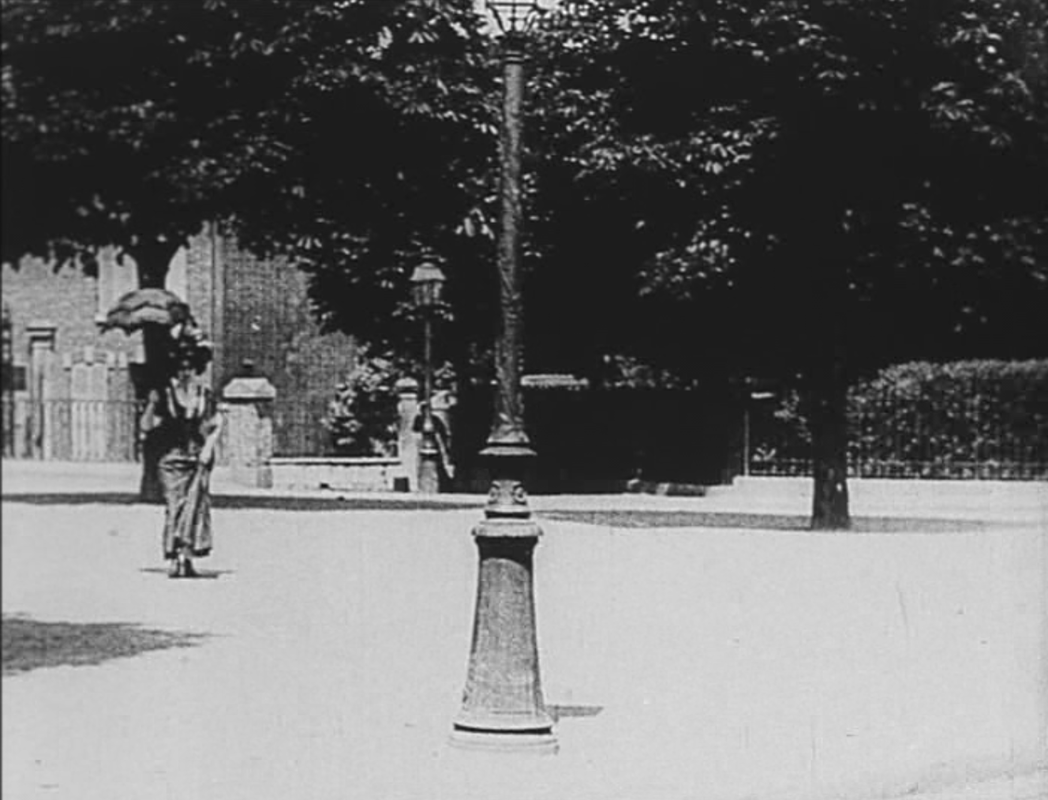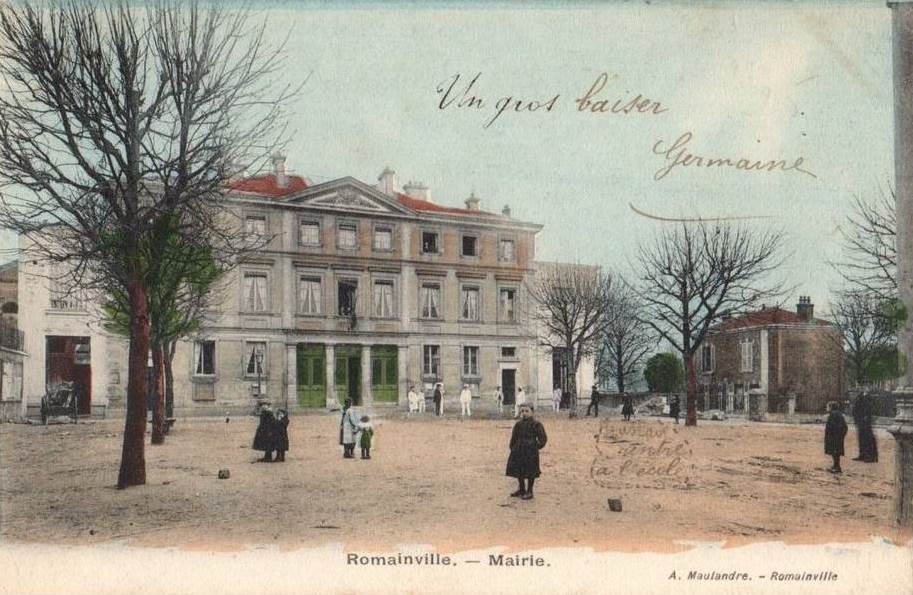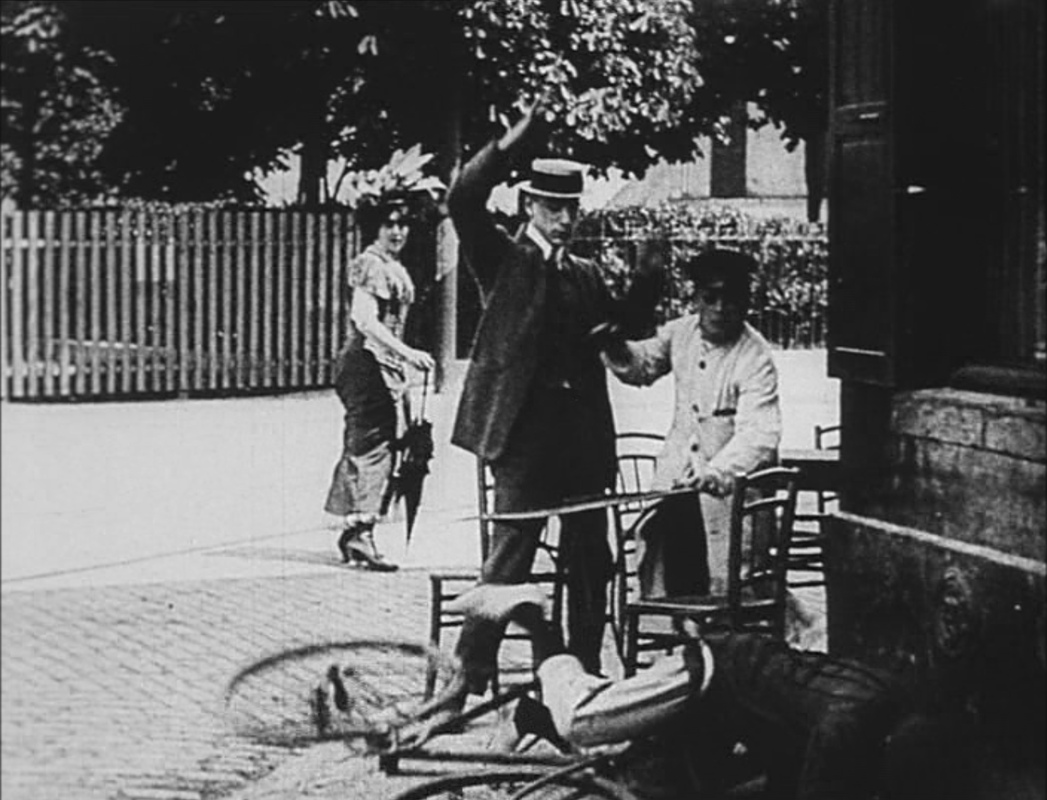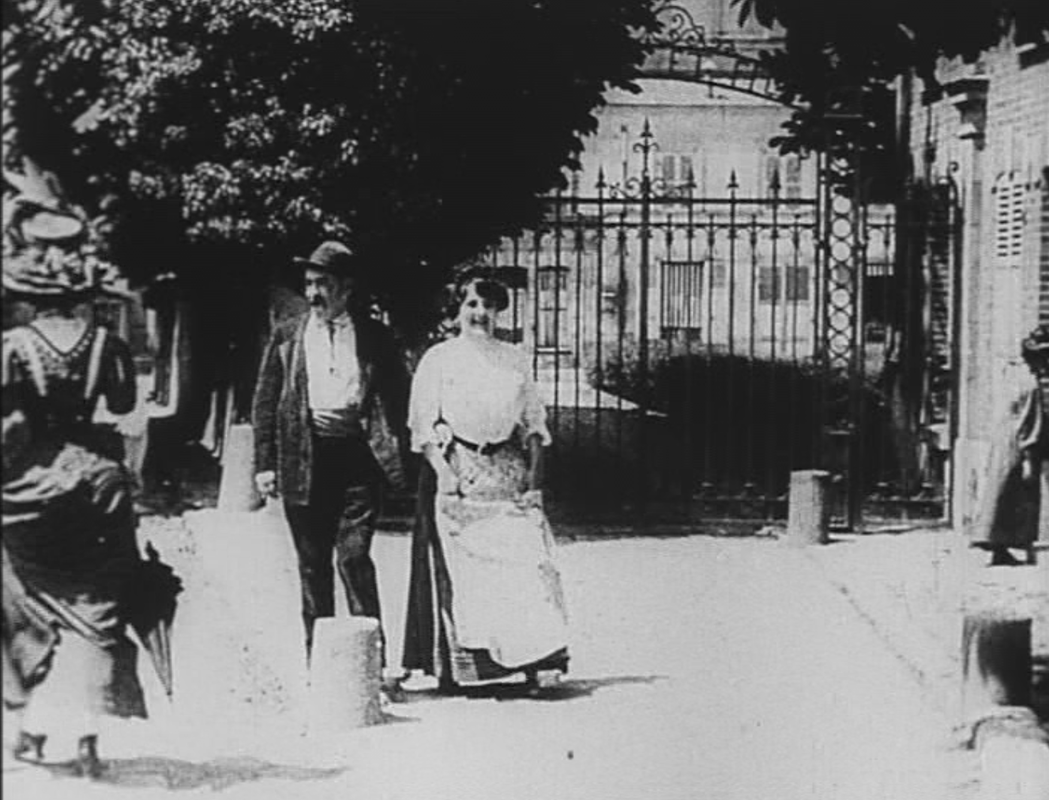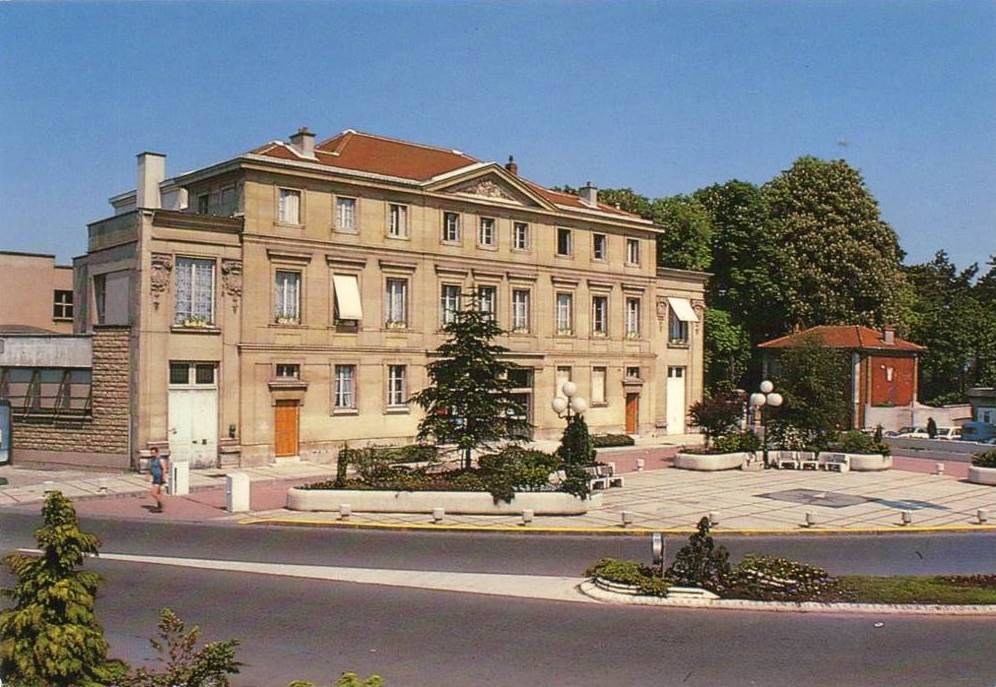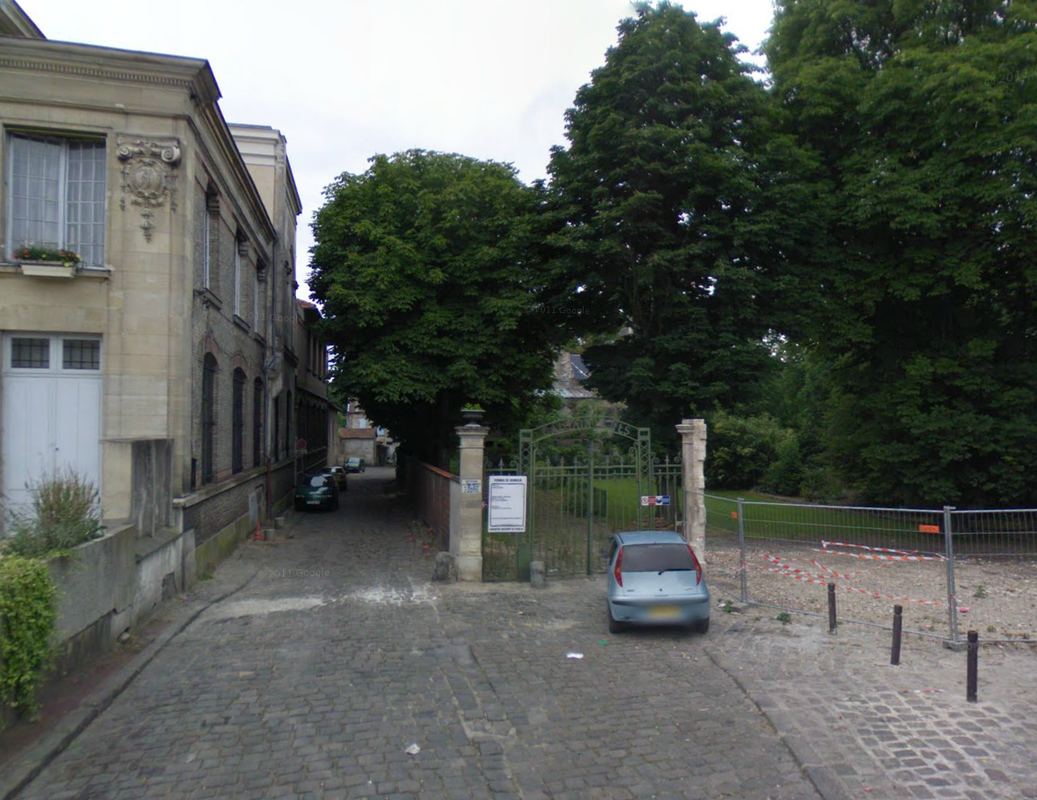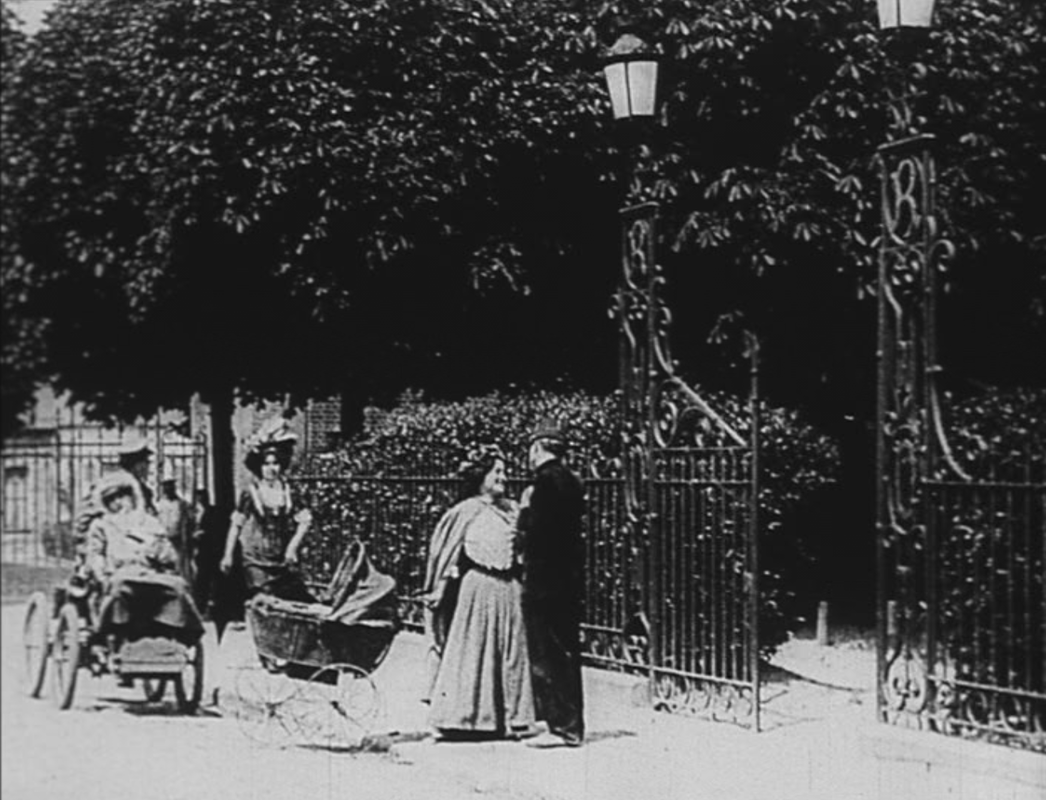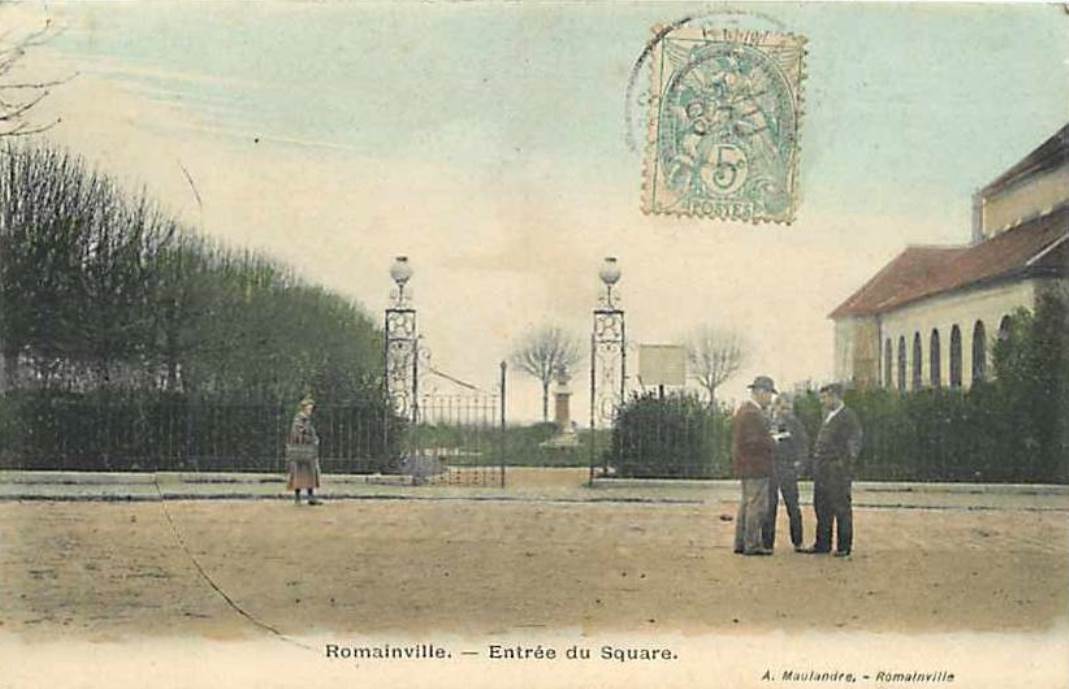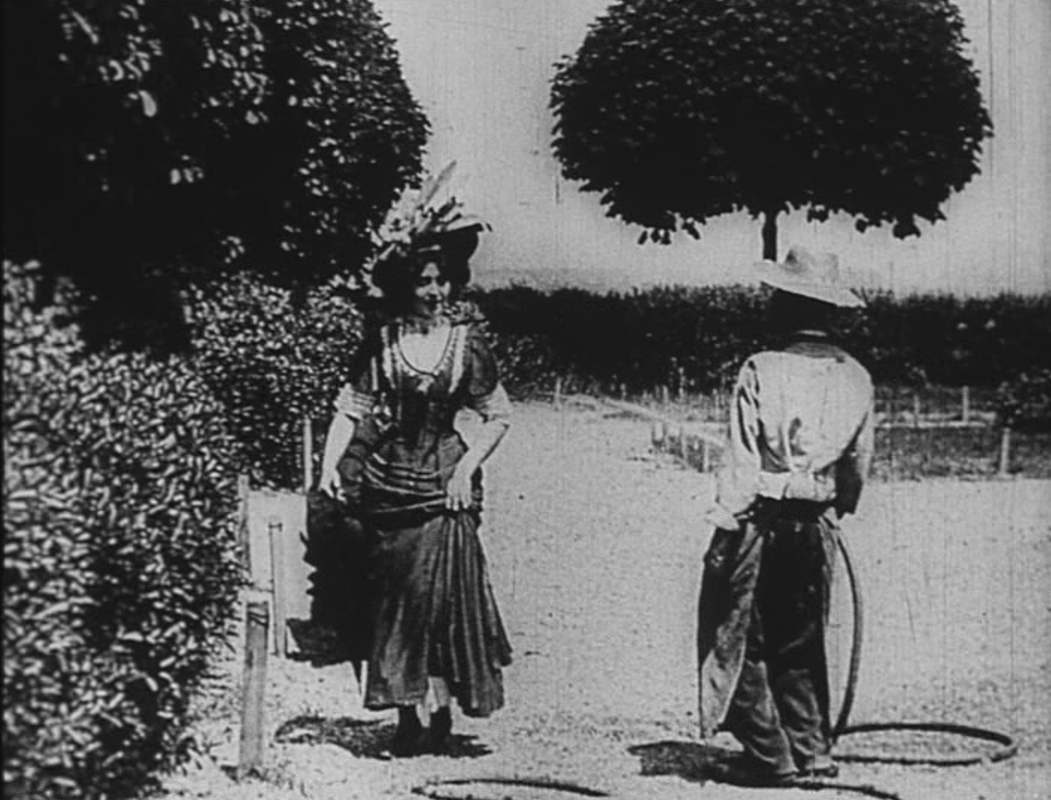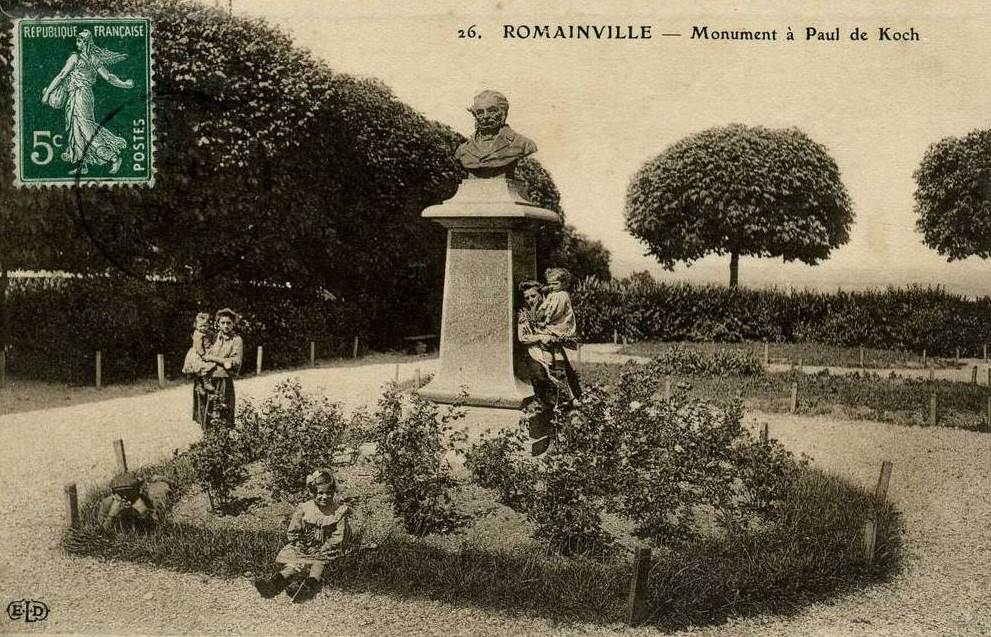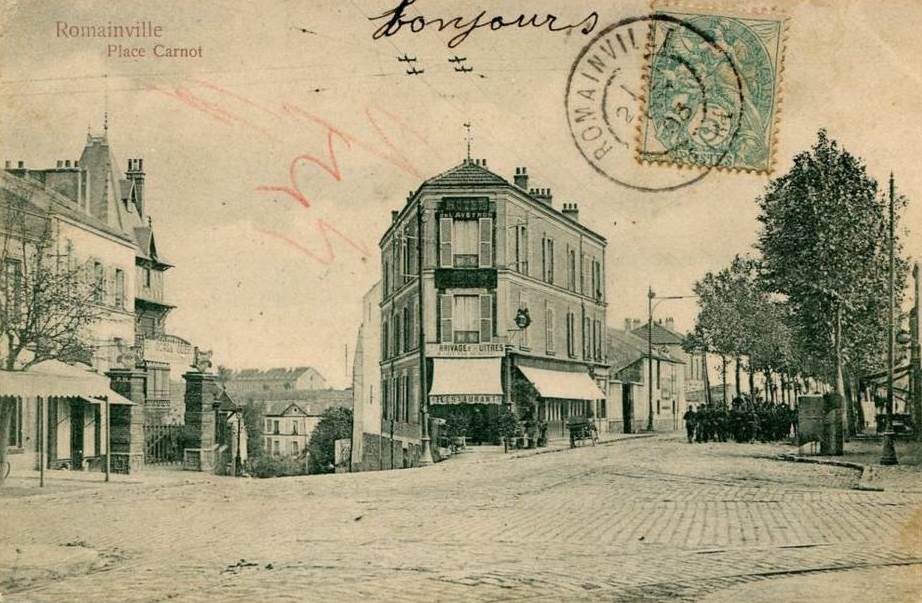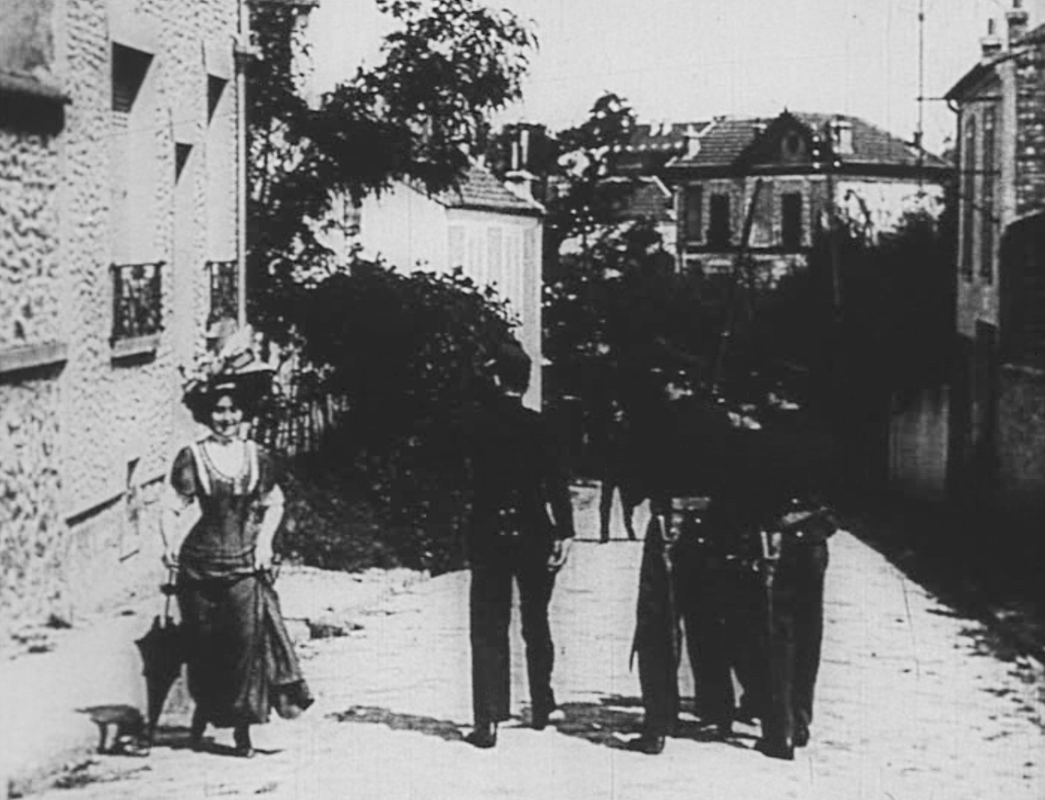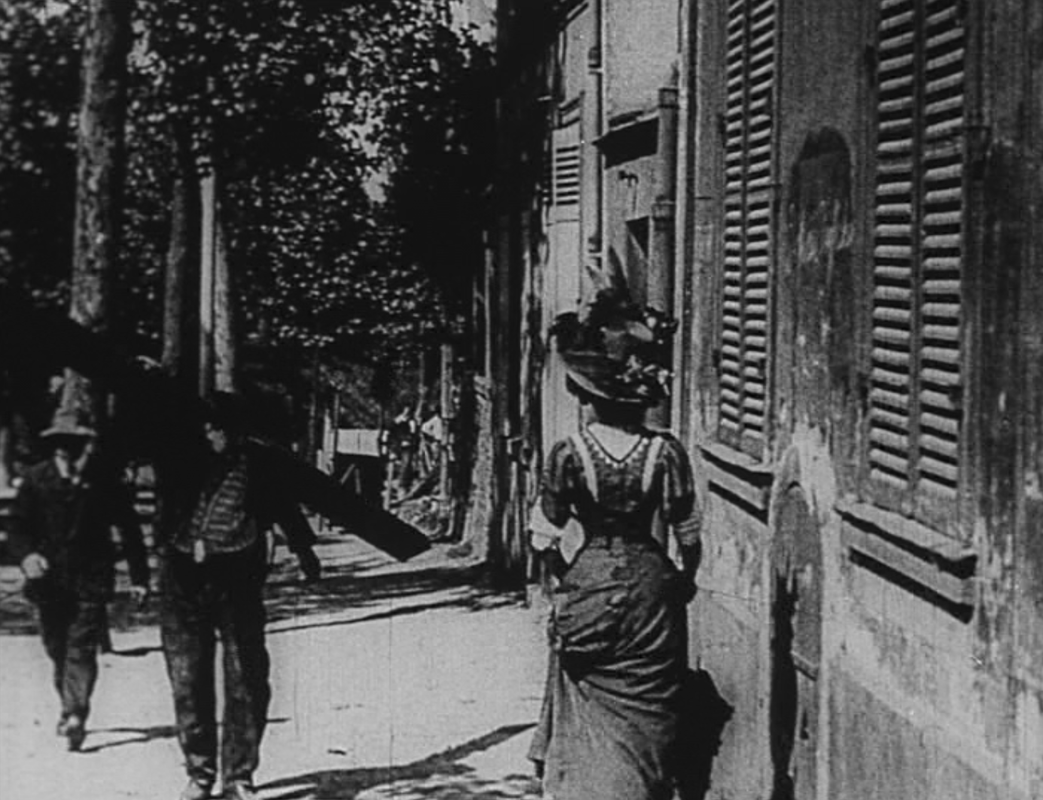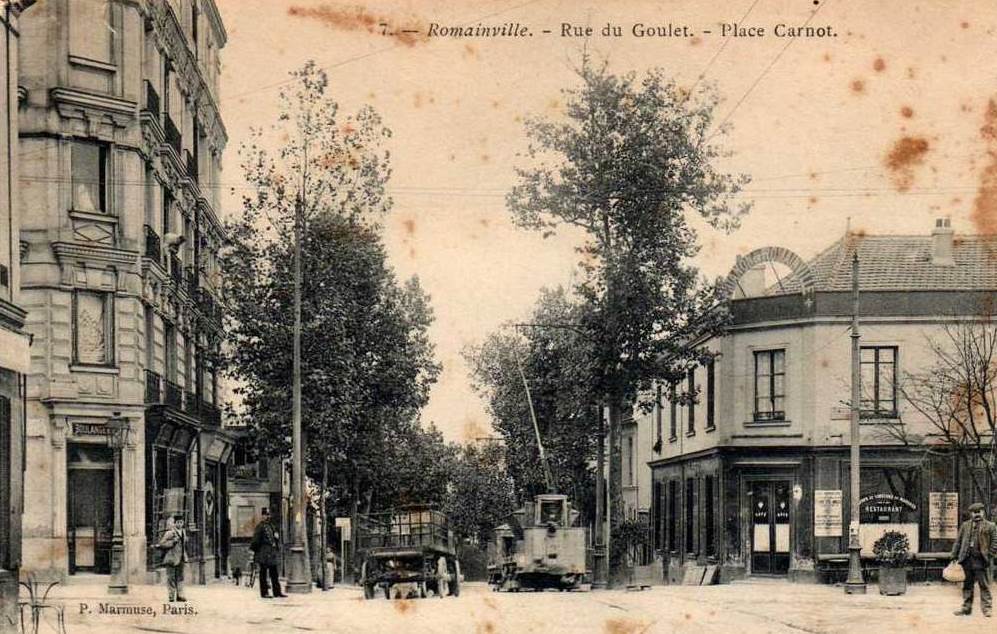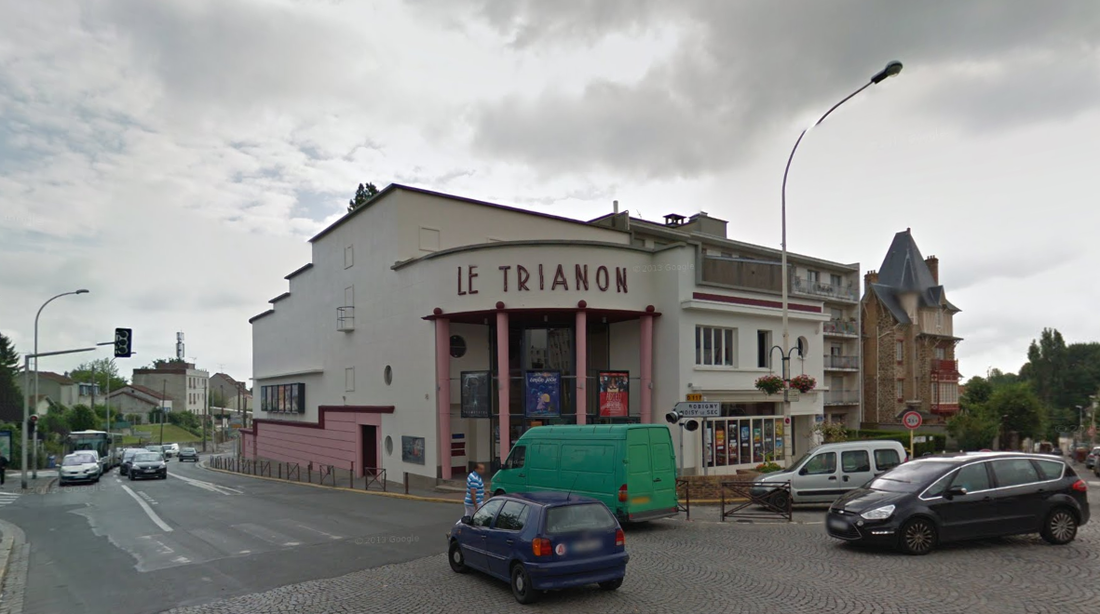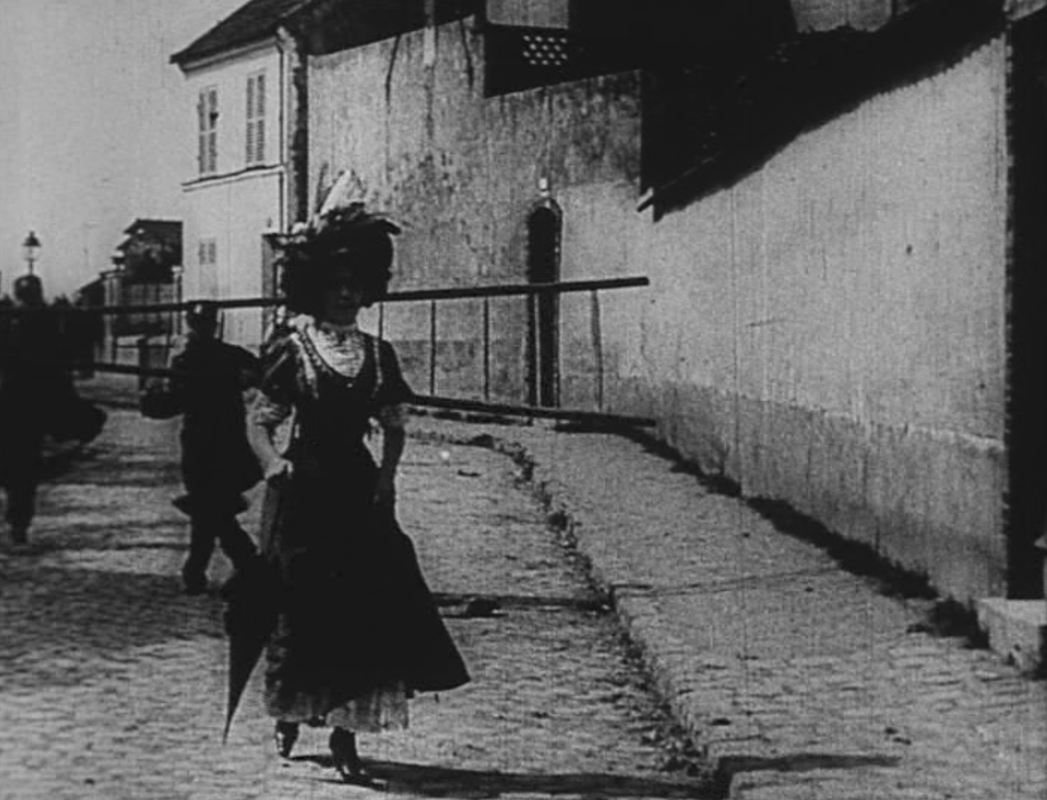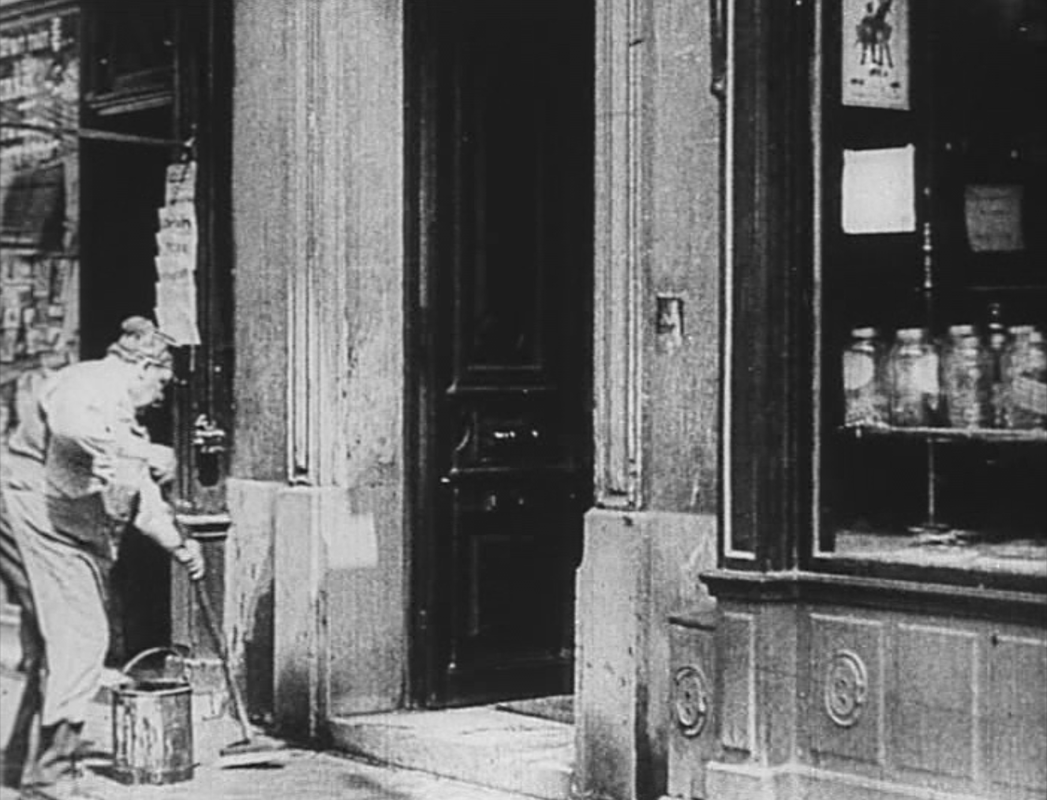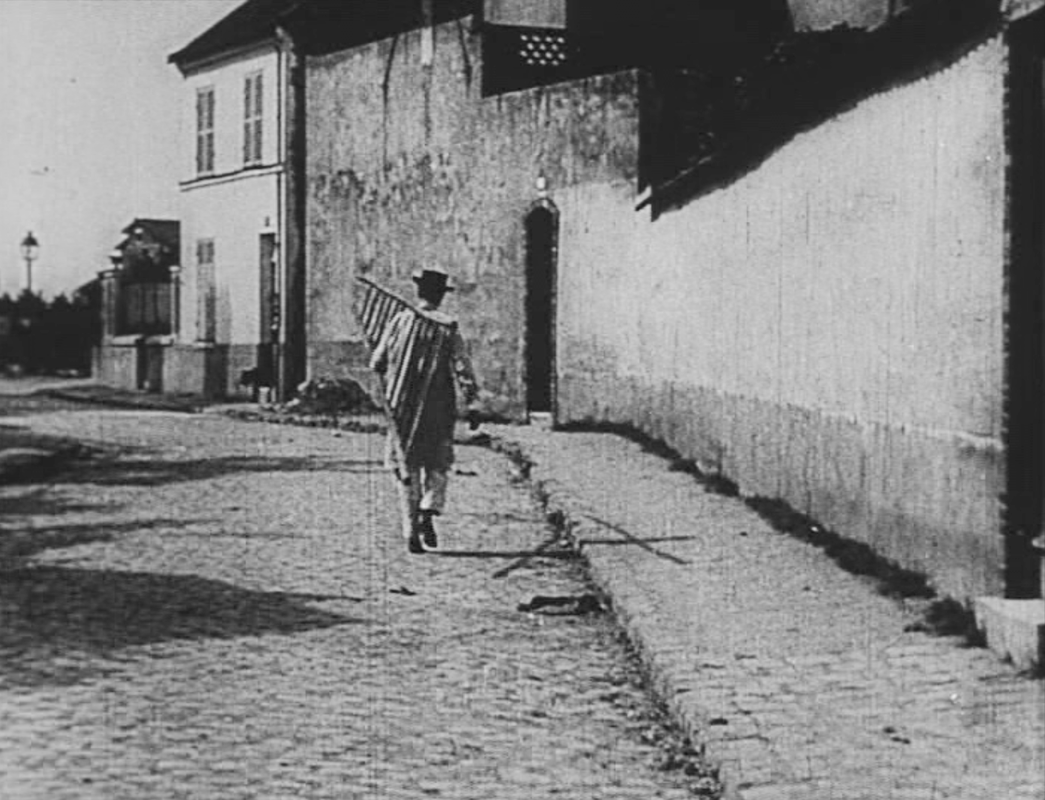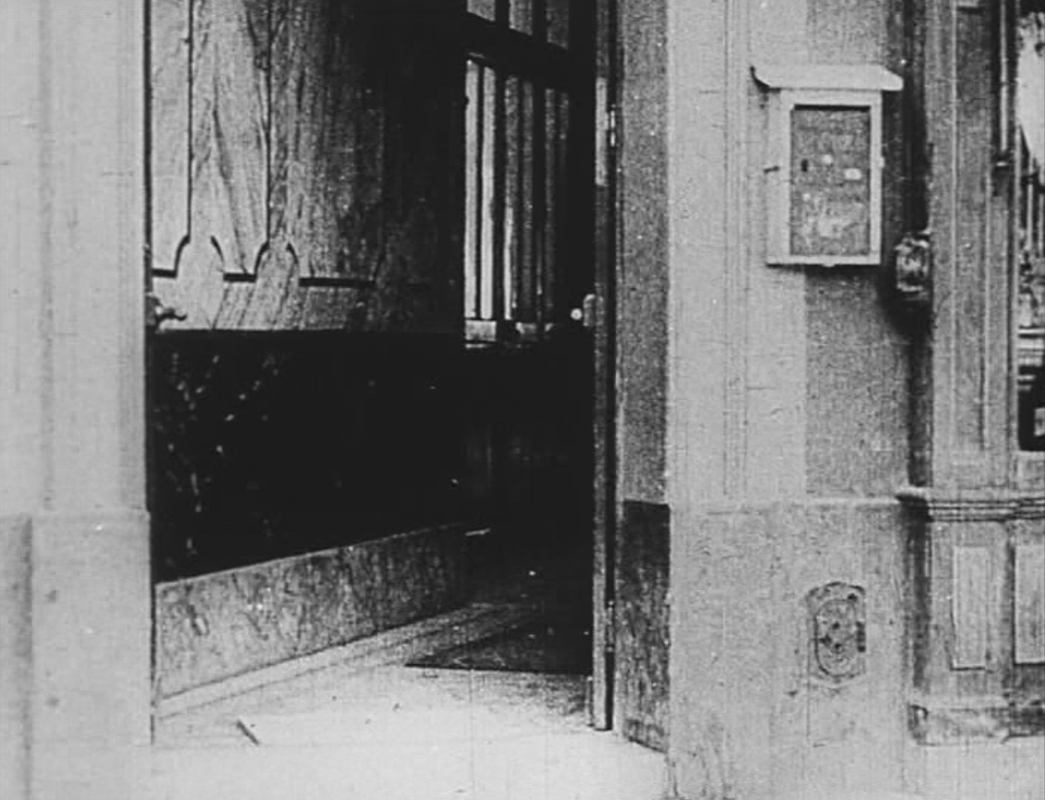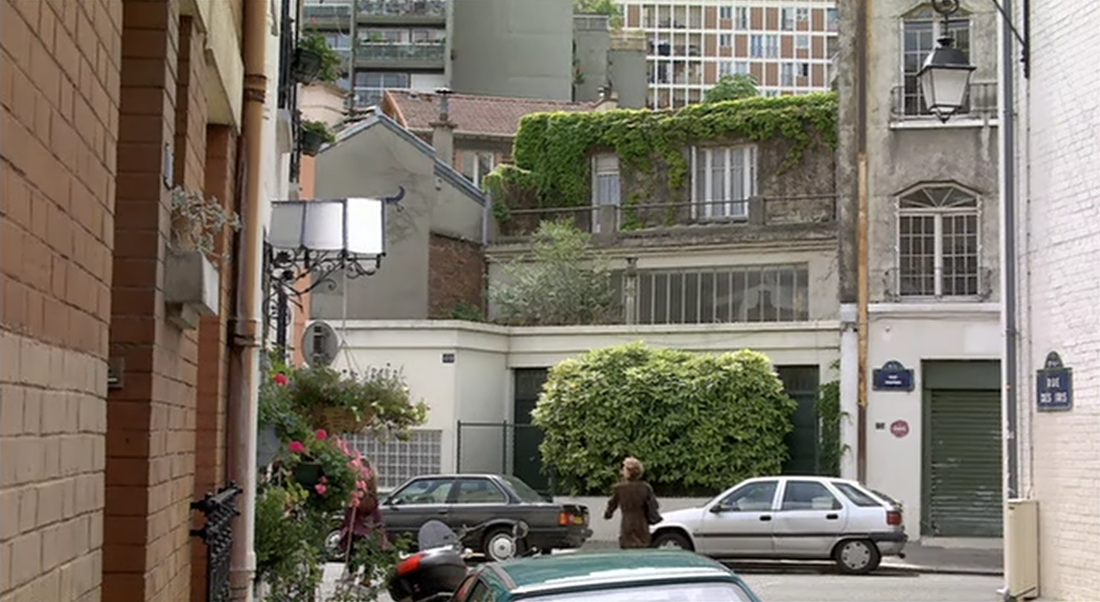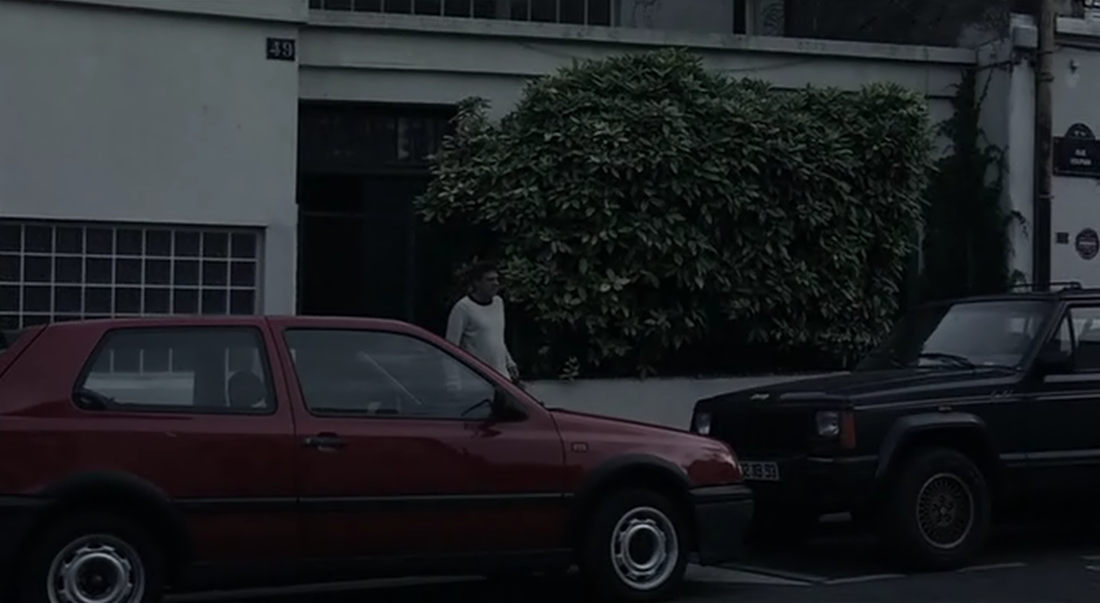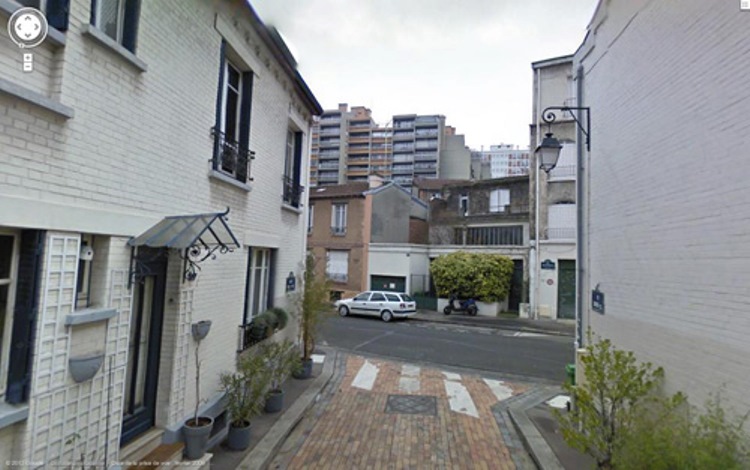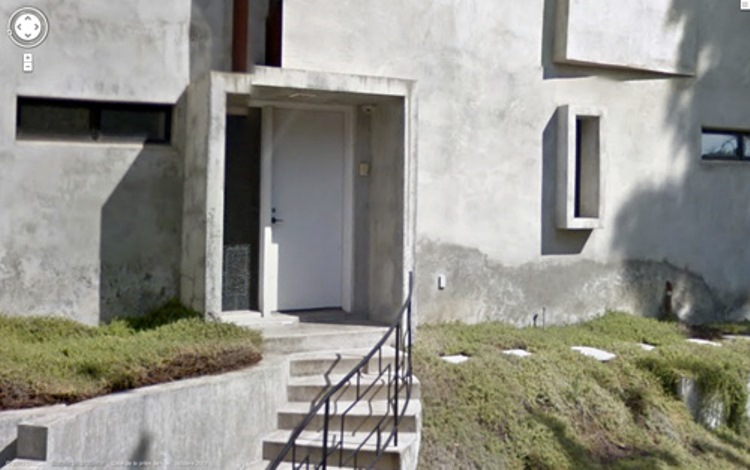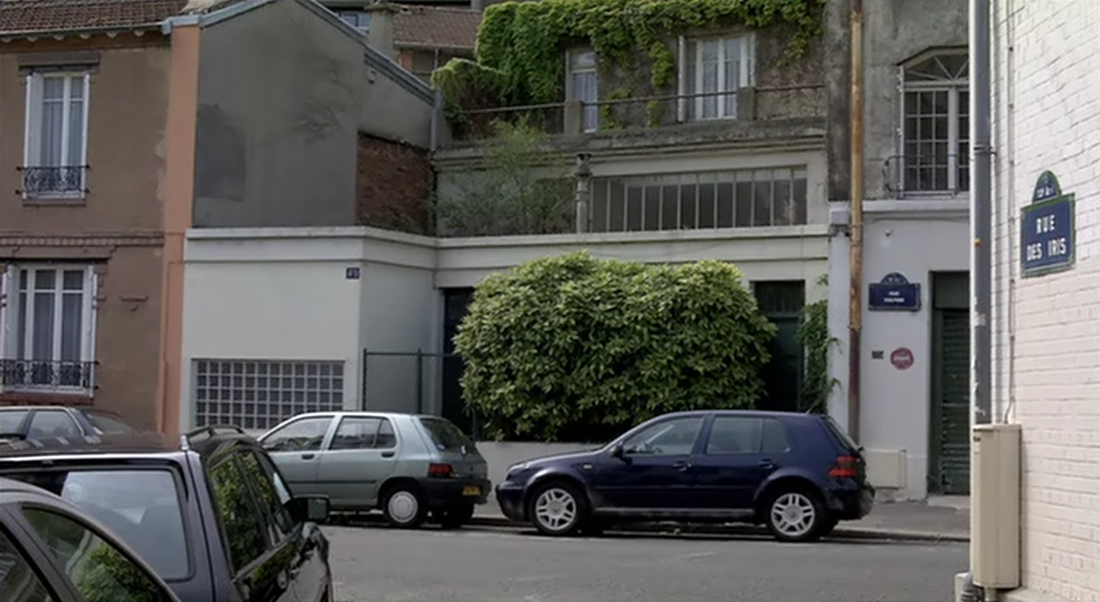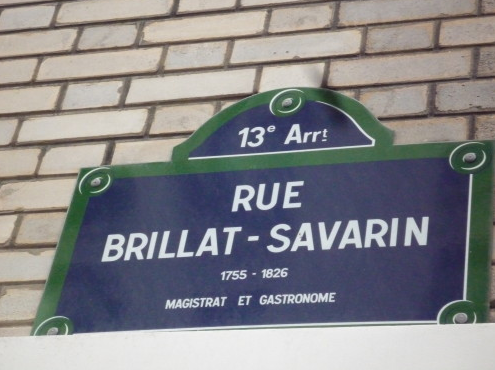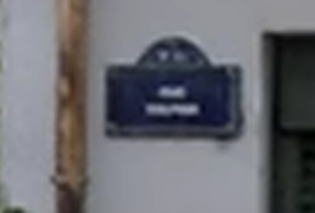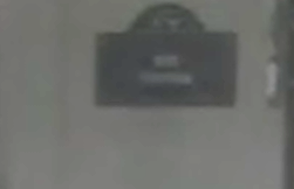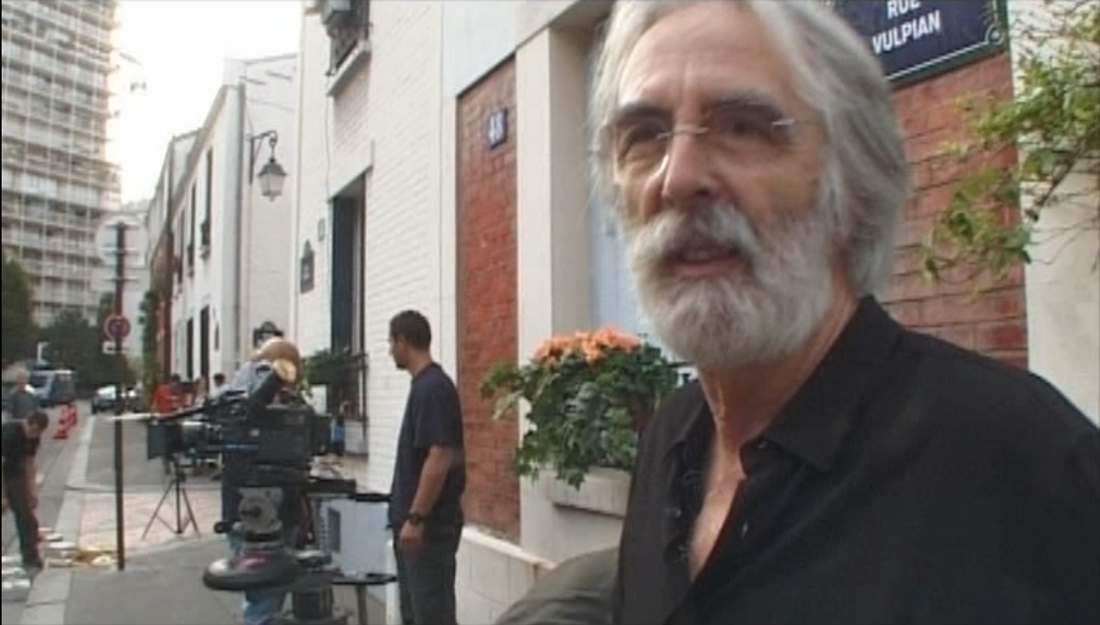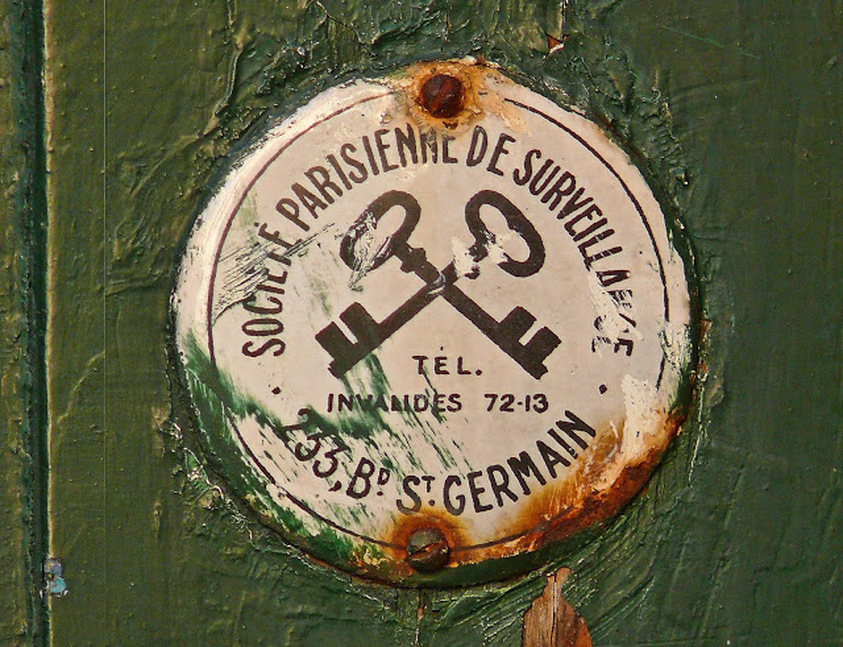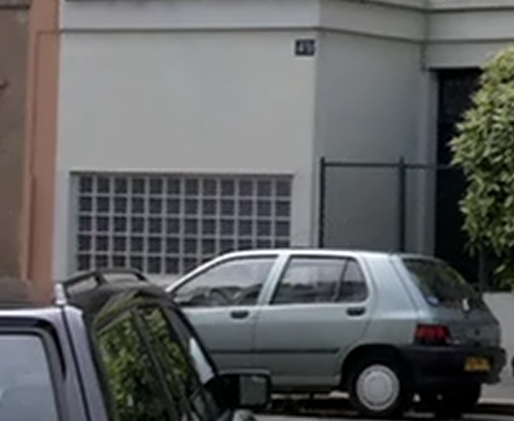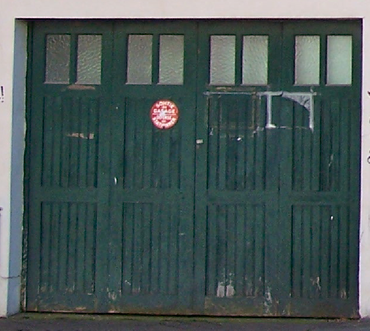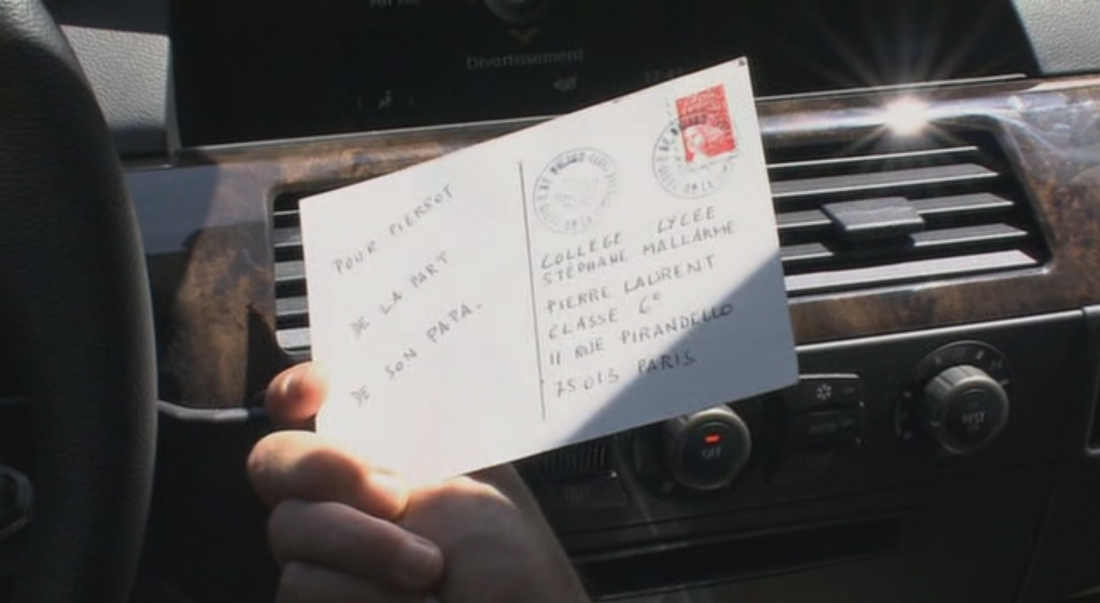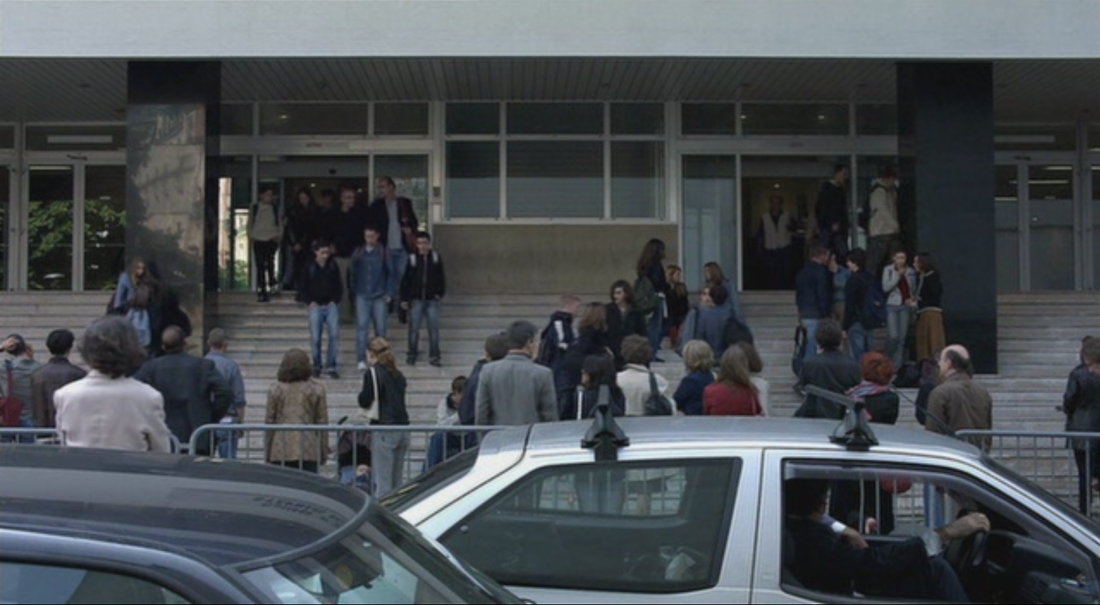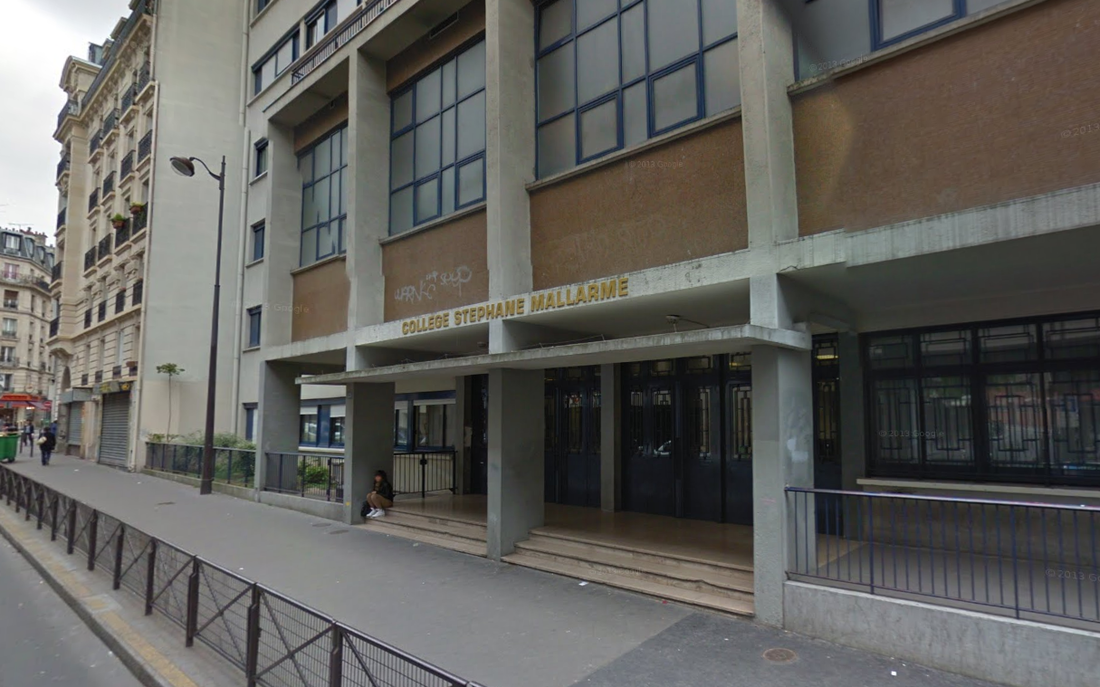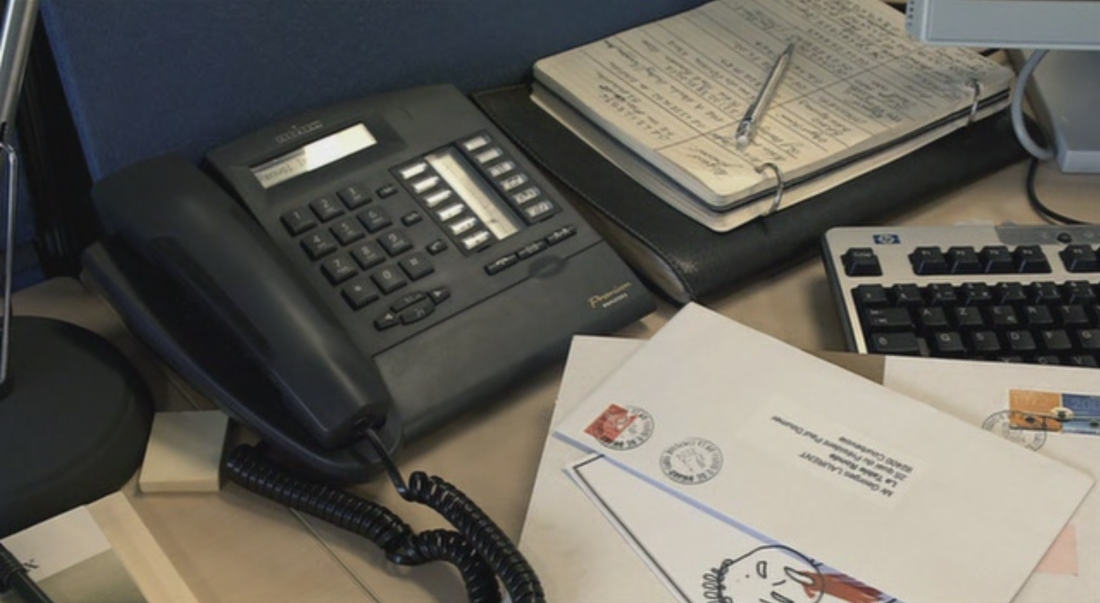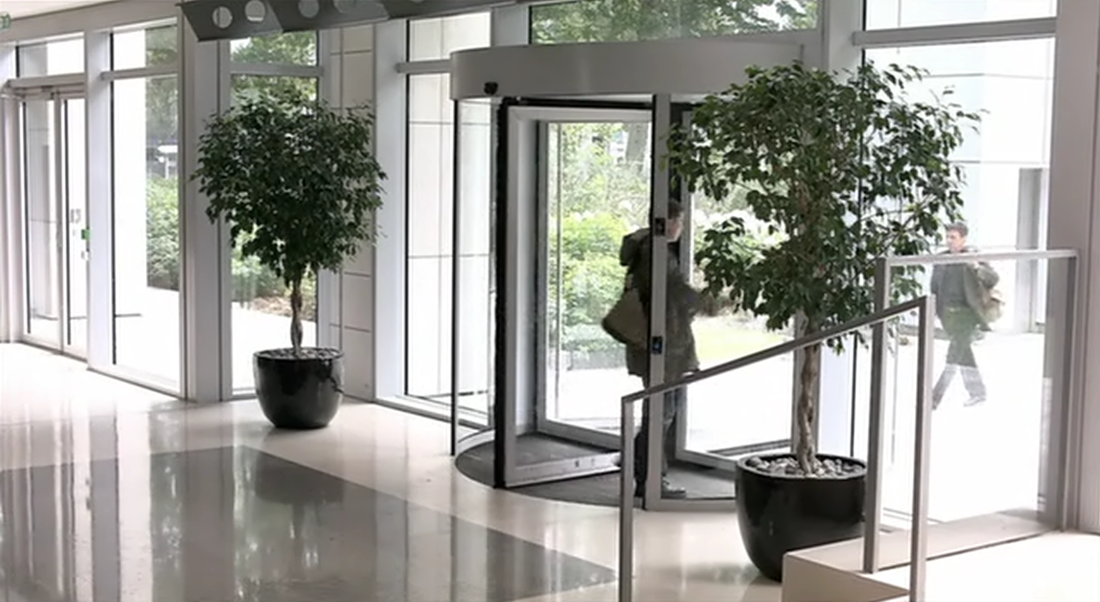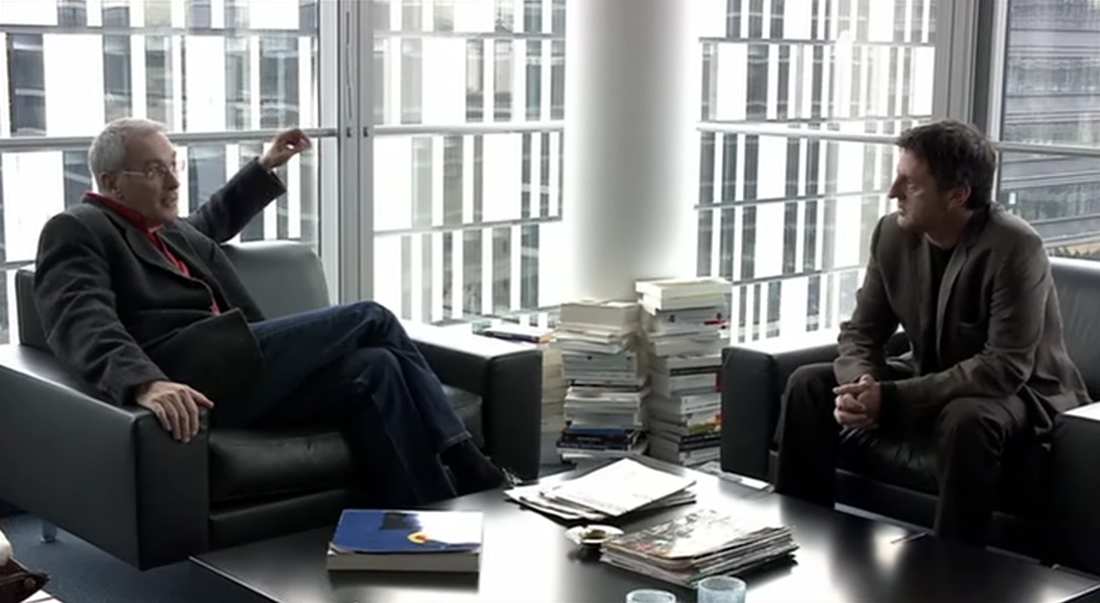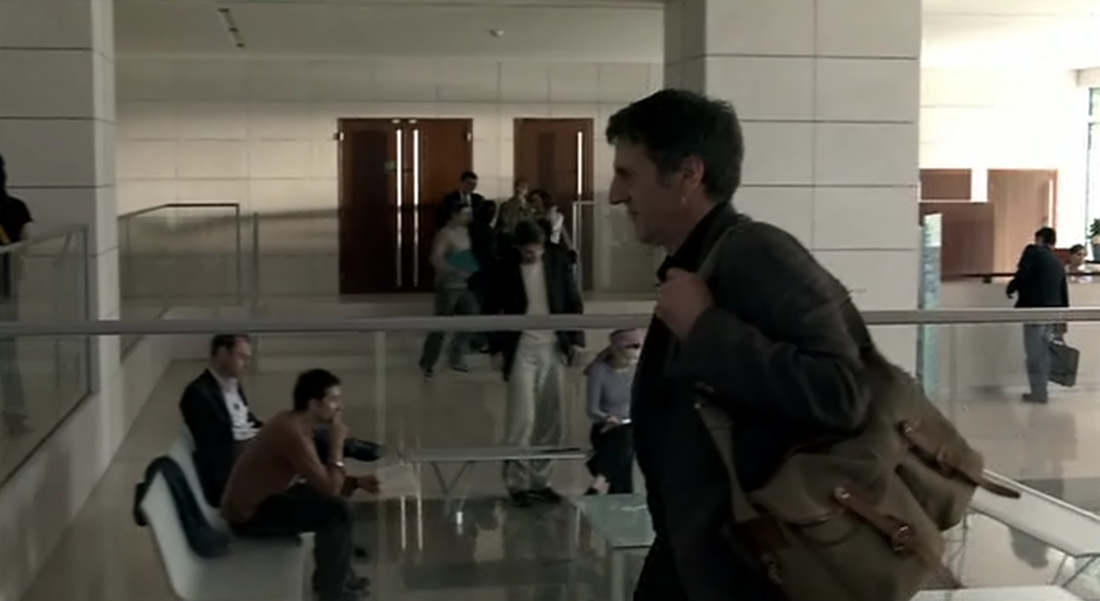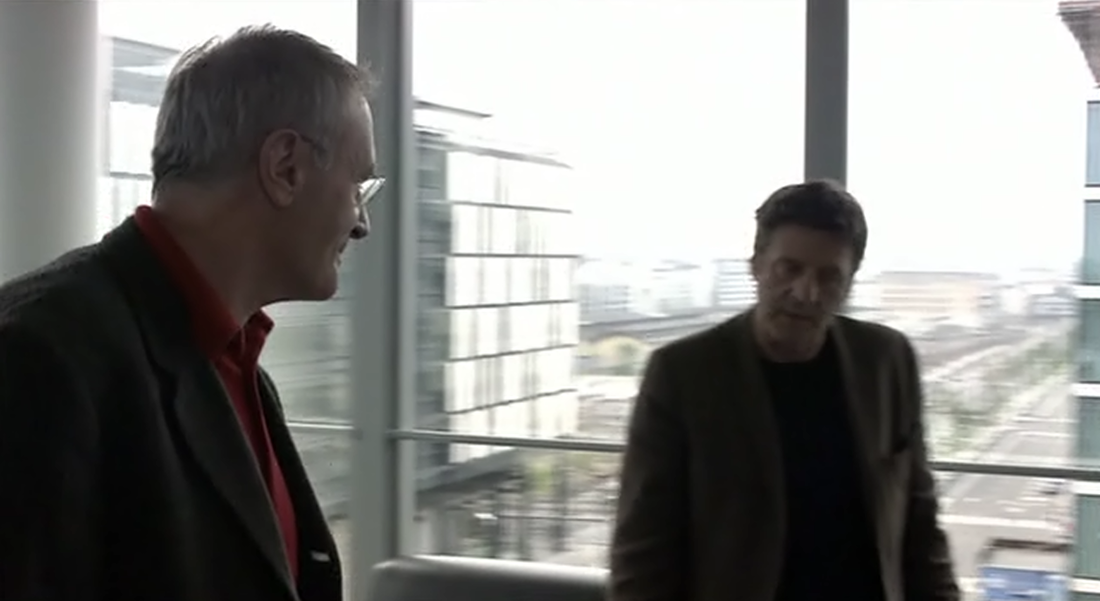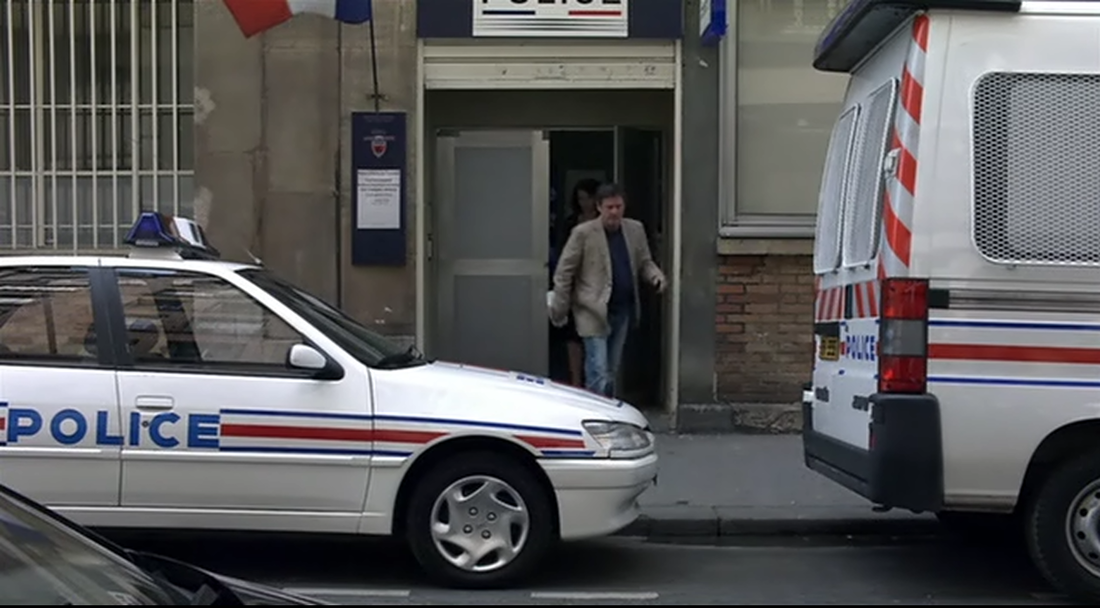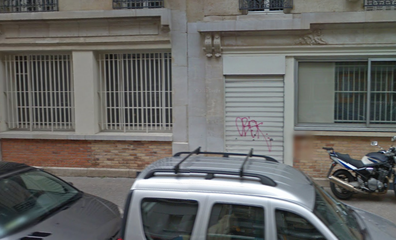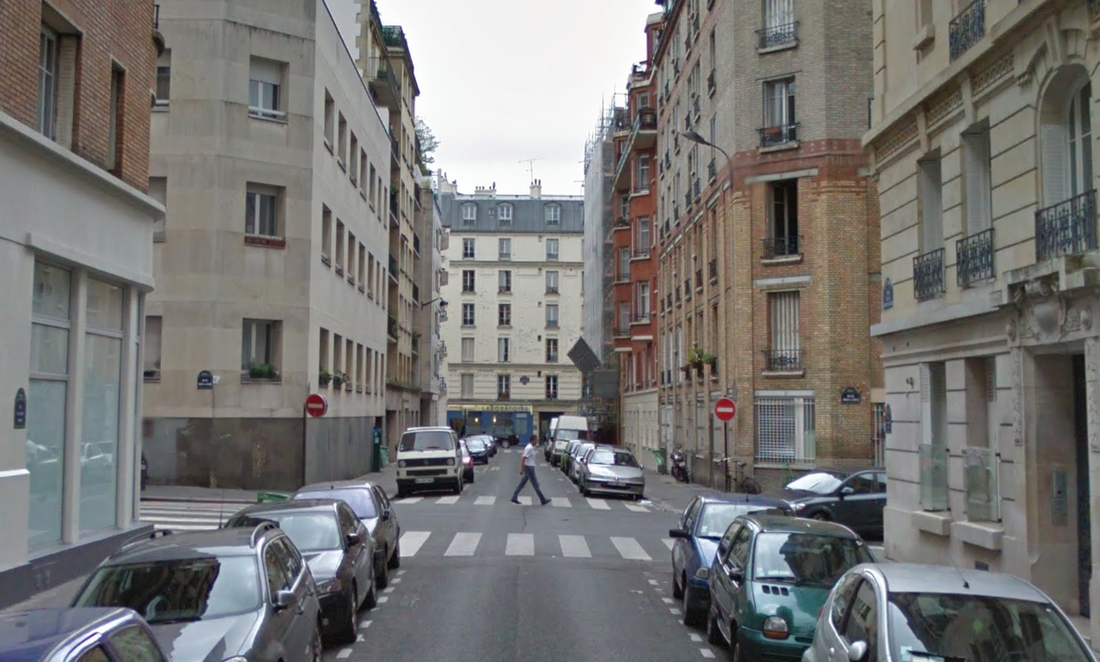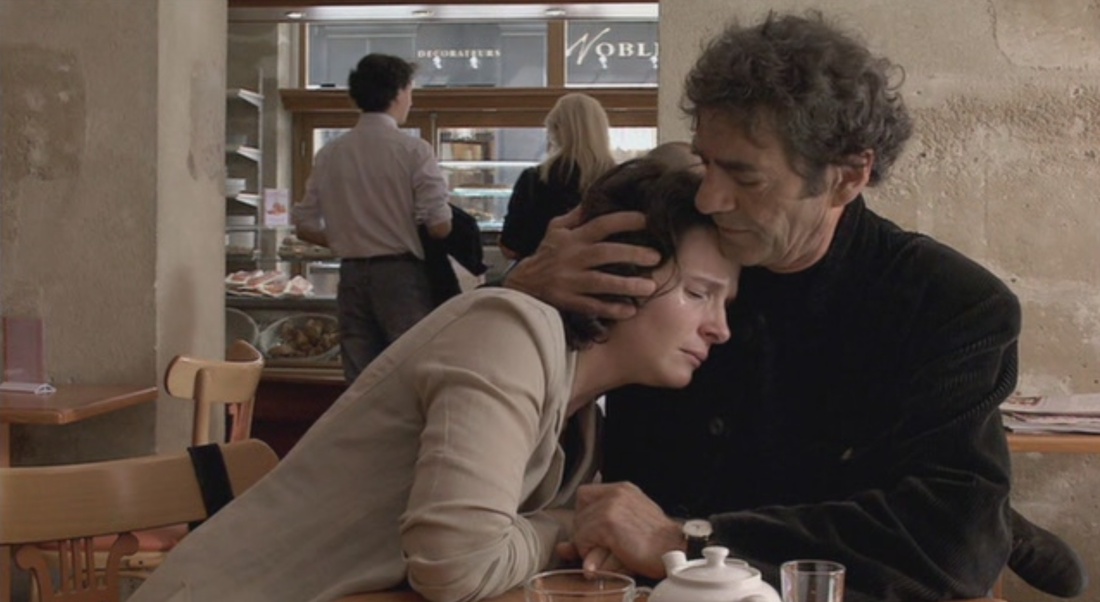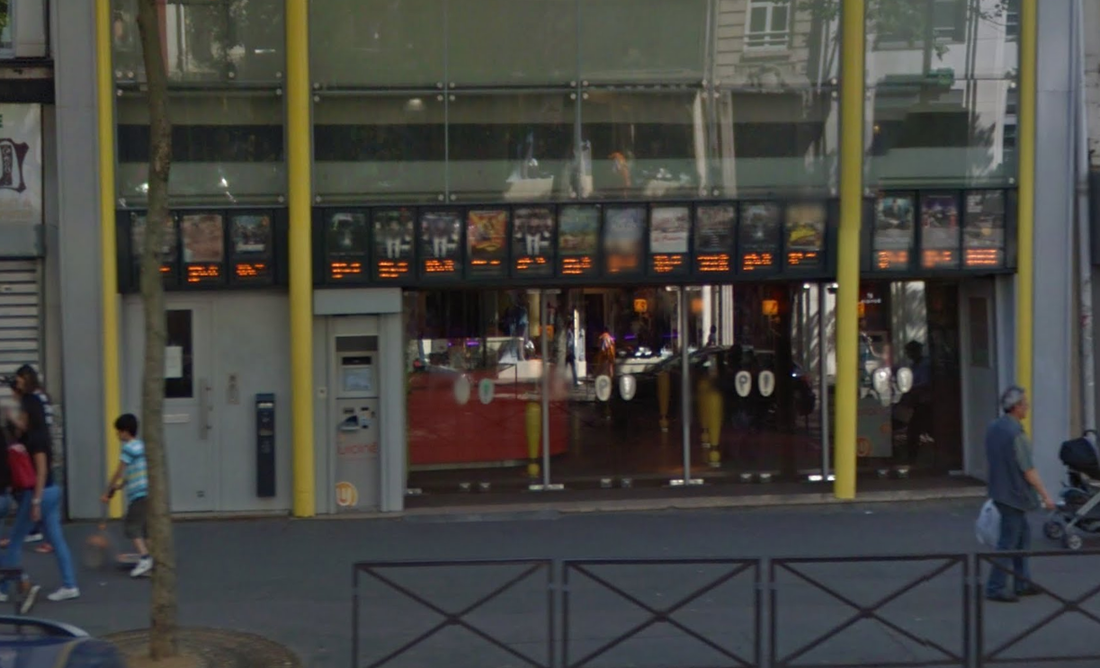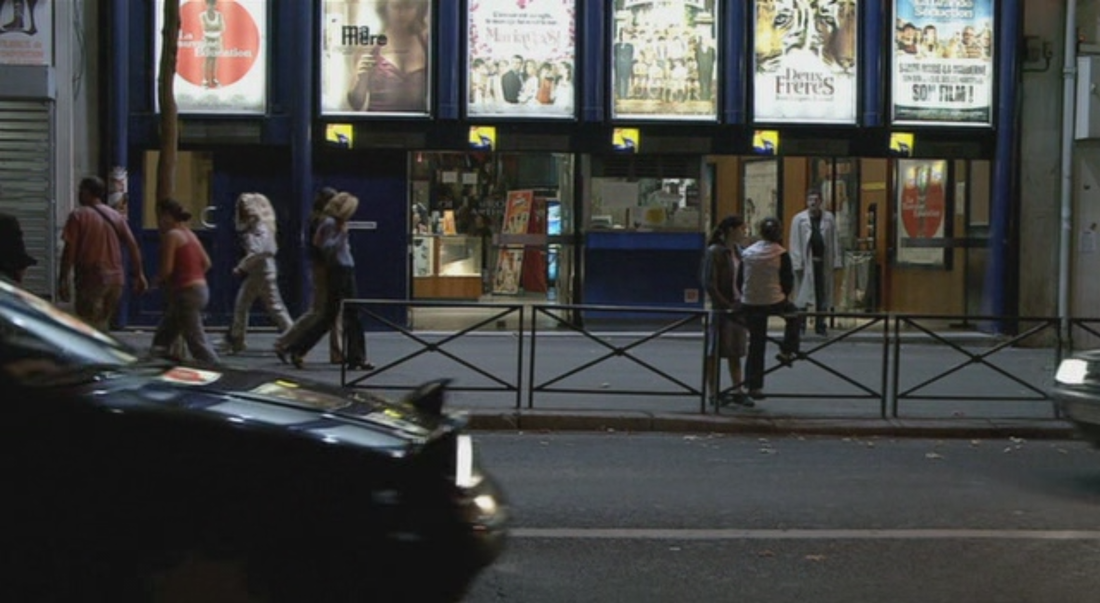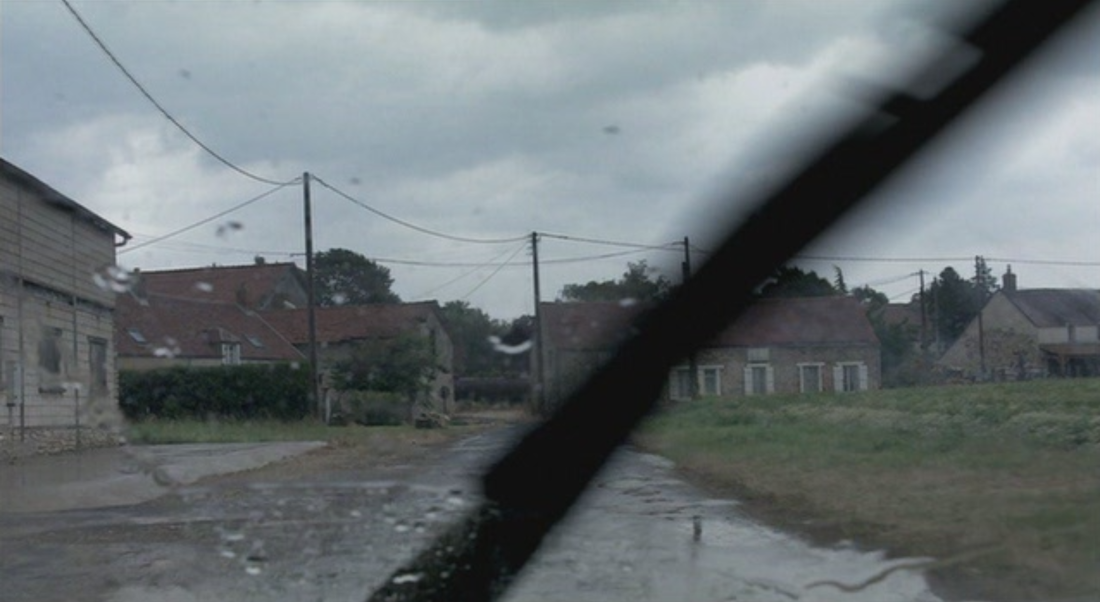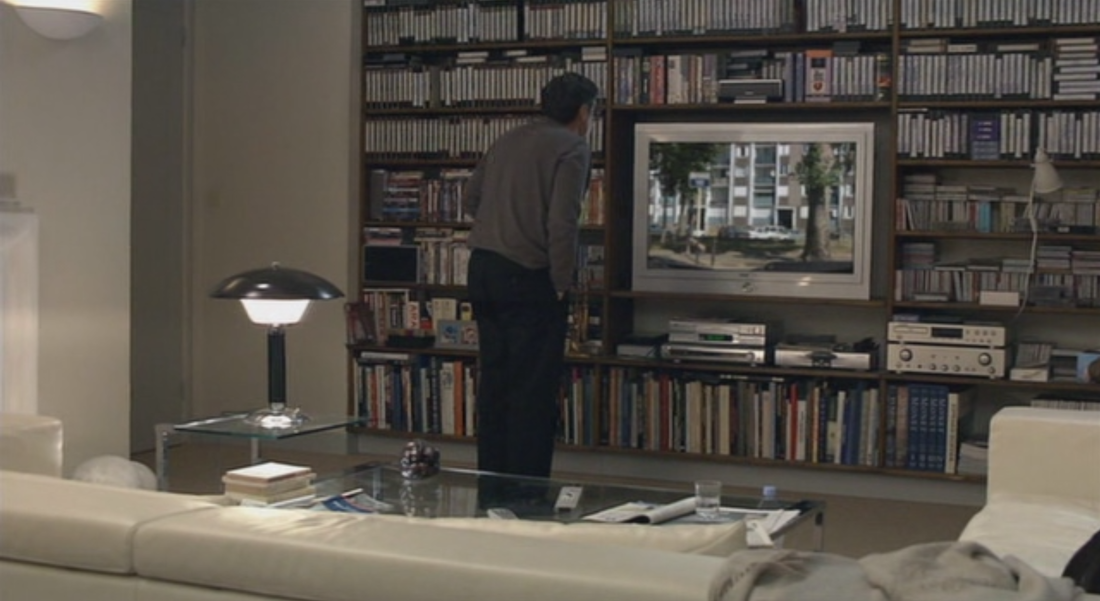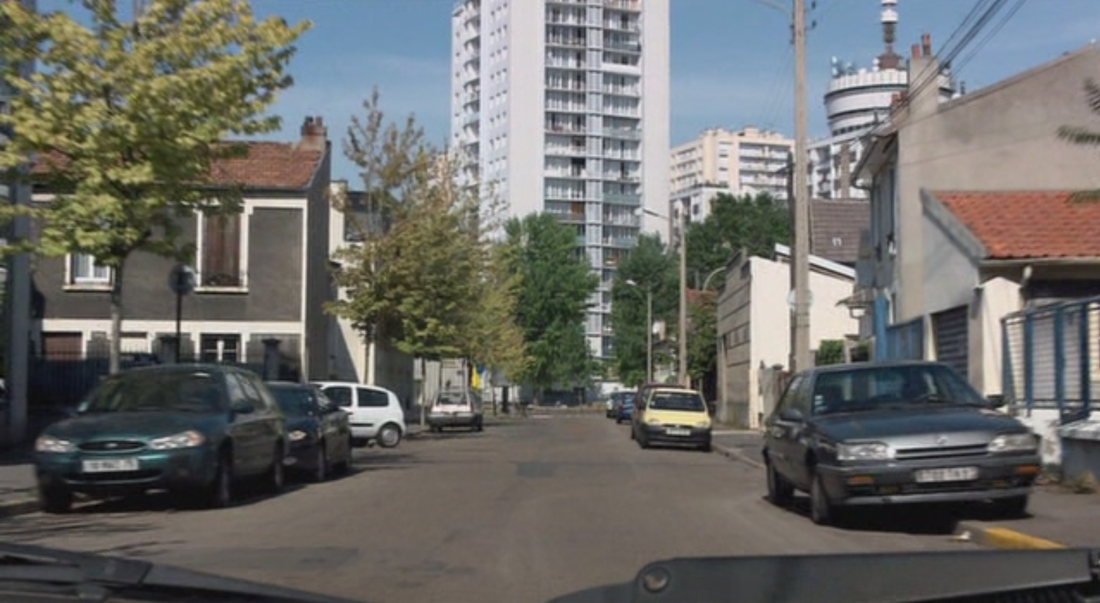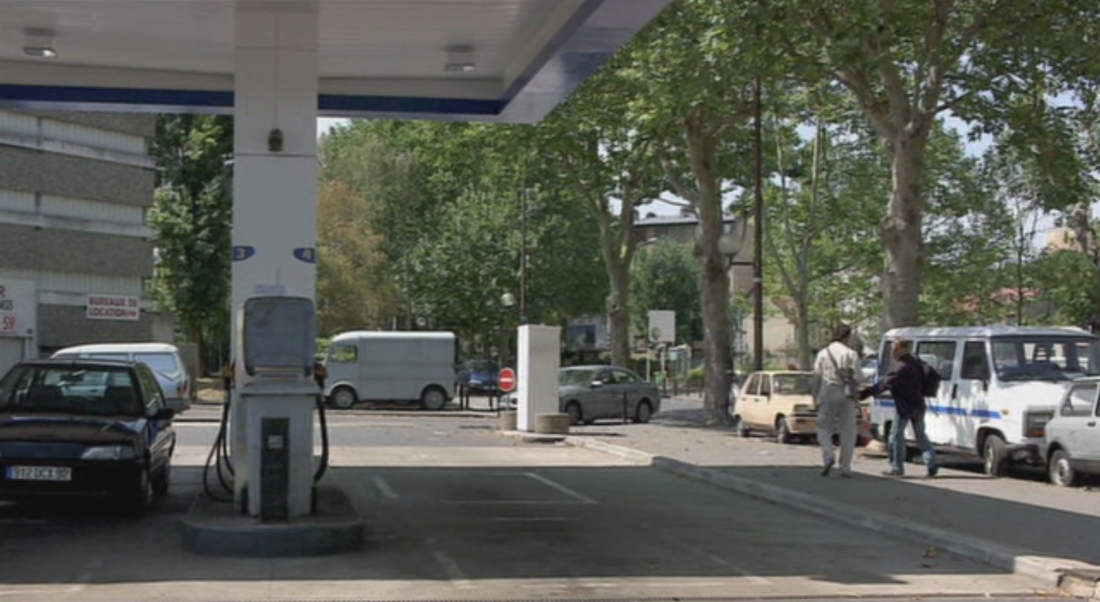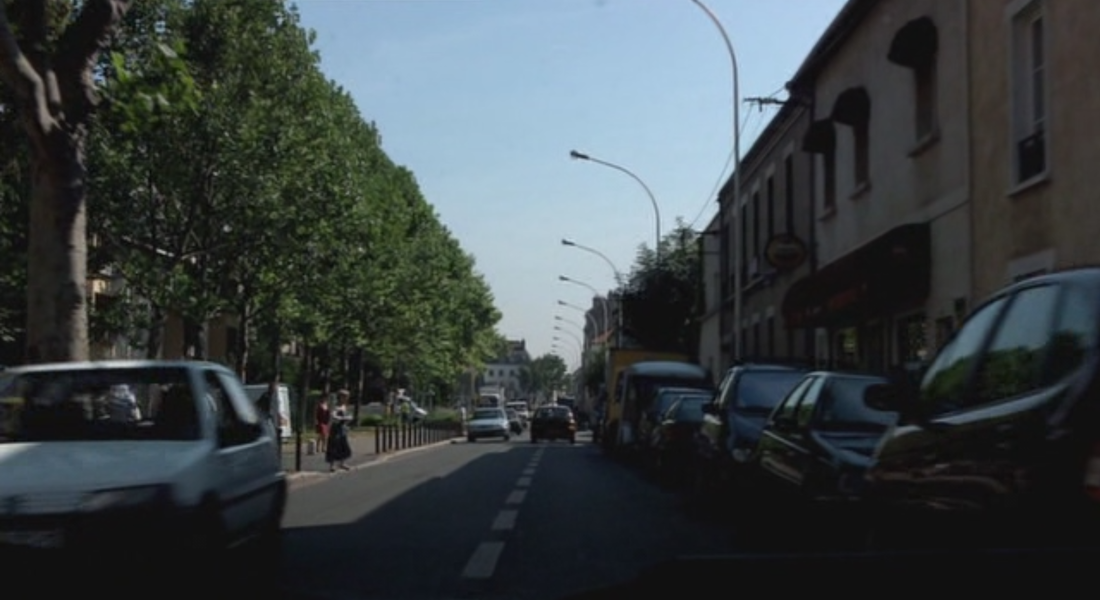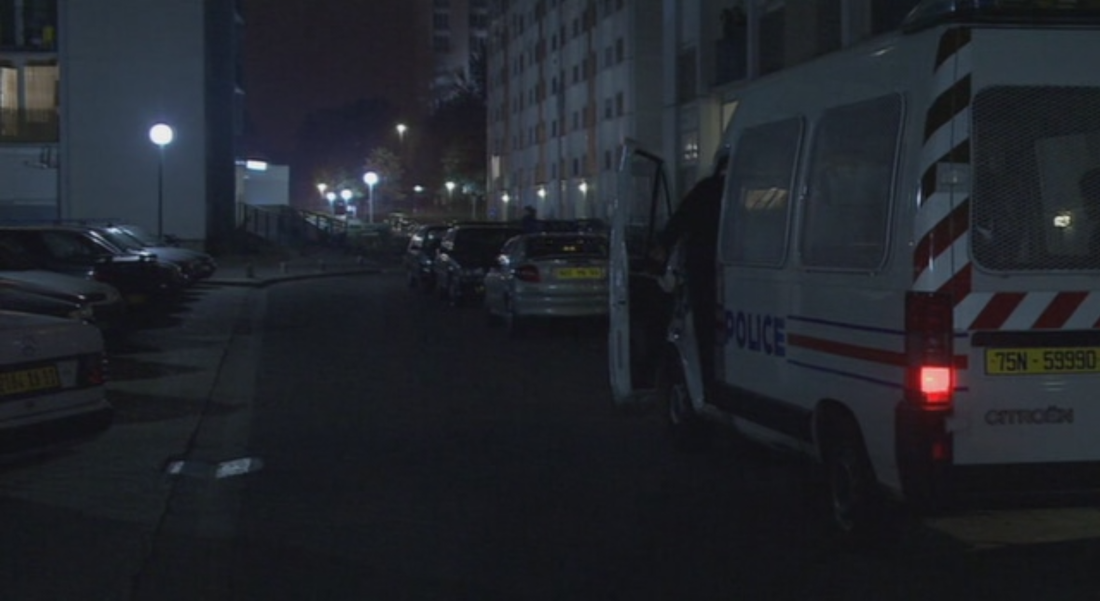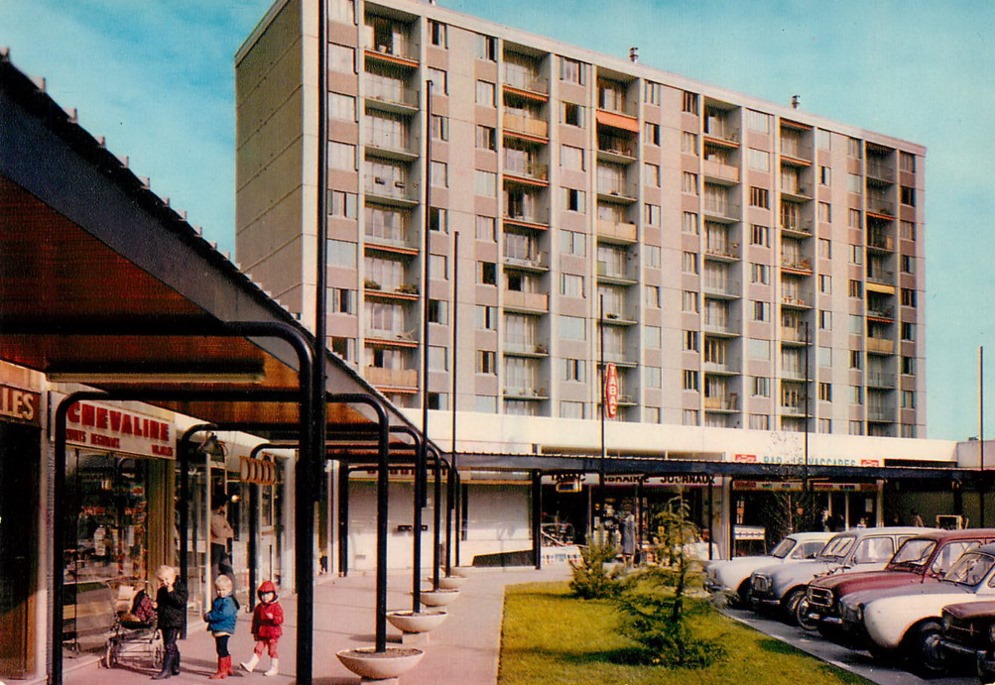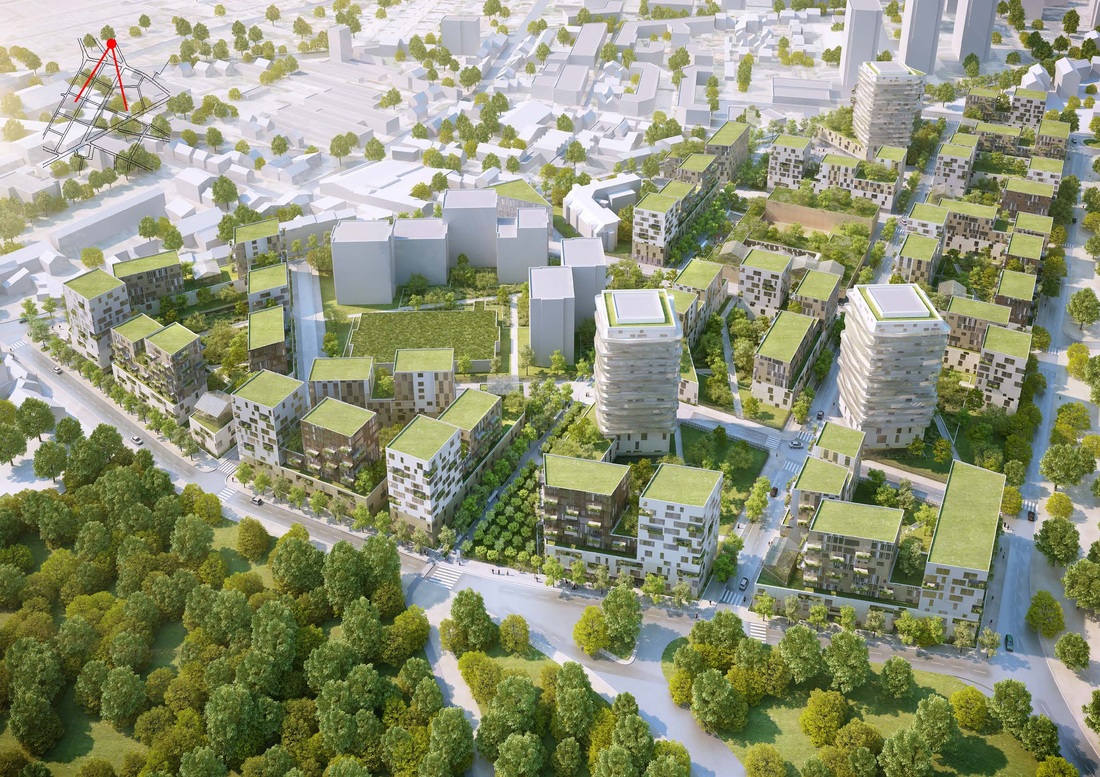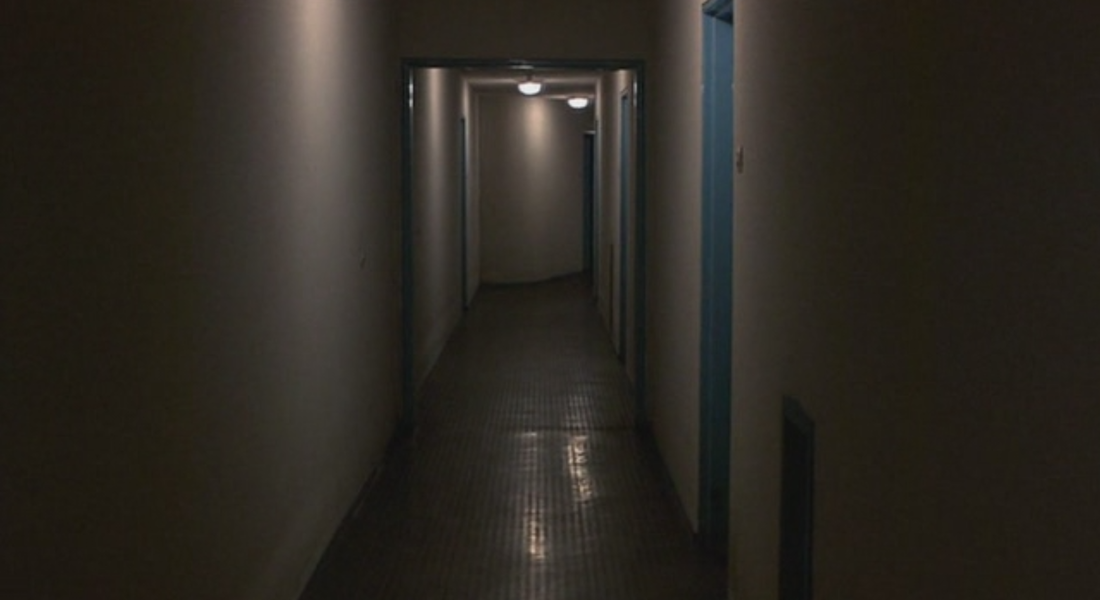Three filmmakers in Romainville:
Haneke, Bosetti, Feuillade
Haneke, Bosetti, Feuillade
A scene in Michael Haneke's Caché (2005) uncannily mimics the cine-tourist's method when trying to identify a location in a film. The protagonists are watching a videotape filmed from inside a car going down one street then turning into another. As it turns there is a street sign which the woman notices as the tape is rewound. The man freezes the tape, edges it forward frame by frame, and they are able to make out the name on the sign: 'Avenue Lénine'. Looking more closely still, he can make out the name of the town on that sign: 'Romainville... it could be Romainville...'.
In a street atlas the woman finds the location,'near the Mairie des Lilas métro station', and the man then decides to go there, though not by métro. This and two further visits add to what we see on the initial videotape, making this part of Romainville a recurrent and significant location in the film, a bleakish suburb that contrasts with the chic-ish Paris home of the protagonists (at 49 rue Brillat-Savarin, 13e):
The tape ends with a shot of an interior corridor, stopping at a door numbered 047. Nothing says where this corridor is to be found, but the man decides it is in the building visible as the car turns from the rue Normandie Niemen into the avenue Lénine. This, for the purposes of Haneke's film, is Romainville:
(See the Appendix at the end of this post for a detailed identification of locations in Caché.)
Without Caché, Romainville would barely have a place on the map of cinema. Audiard's Un héros très discret (1996) thanks the mairie of Romainville in its end credits, but I have not been able to work out where in that film Romainville might appear. Moullet's Les Sièges de l'Alcazar (1989) is attributed a Romainville filming location on IMDB, but I can't see that any of its three brief exteriors could be Romainville; IMDB must be wrong. In 1966 Terence Young filmed part of his wartime spy film Triple Cross at the fort de Romainville, which though technically in Les Lilas is just behind the Cité Youri Gagarine, near the telecommunications tower that is glimpsed in Caché:
Without Caché, Romainville would barely have a place on the map of cinema. Audiard's Un héros très discret (1996) thanks the mairie of Romainville in its end credits, but I have not been able to work out where in that film Romainville might appear. Moullet's Les Sièges de l'Alcazar (1989) is attributed a Romainville filming location on IMDB, but I can't see that any of its three brief exteriors could be Romainville; IMDB must be wrong. In 1966 Terence Young filmed part of his wartime spy film Triple Cross at the fort de Romainville, which though technically in Les Lilas is just behind the Cité Youri Gagarine, near the telecommunications tower that is glimpsed in Caché:
And in 1950 René Renoux reconstructed a Breton village on the open spaces east of the fort for Jean Delannoy's film Dieu a besoin des hommes.
To find a screen image of Romainville to match Caché we have to go much further. The car in Caché turns right into the Avenue Lénine, heading towards the centre of Romainville:
To find a screen image of Romainville to match Caché we have to go much further. The car in Caché turns right into the Avenue Lénine, heading towards the centre of Romainville:
If it had continued into the Avenue Paul Vaillant-Couturier it would have soon arrived at the mairie and the chuch of Saint Germain l'Auxerrois:
Both mairie and church can be glimpsed in Romeo Bosetti's L'Agent a le bras long, made for Gaumont in 1909:
In this comedy a policeman makes good use of his extendable arm in three different situations, before the climactic pursuit of a would-be thief. The film features six different exteriors, five of which can be identified as Romainville. The first location is the square in front of the mairie, as in the shot above left and, before that, this closer view, with the entrance to the château de Romainville behind the policeman and a woman asking for directions:
Built in 1630, the château fell into disuse and was awaiting restoration as a social amenity when a fire destroyed much of it in 2010 (see here).
In the next scene the policeman uses his arm as a bridge from a barge or bateau-lavoir to the canal edge. I have not been able to locate this canal in Romainville. Probably it is the canal de l'Ourcq, which runs past nearby Pantin, Bobigny, Noisy-le Sec and Bondy:
Next he chastises a woman for beating her carpets out of the window after hours. In this shot is the clue to the locations of the film:
The number 1 above the door gives us an exact address, which is at the end of the rue Carnot as it enters the square in front of the church. It is hard to see the match between the film above and the postcard below, but that reddish café front on the left is the continuation of number 1:
Next the policeman halts a robbery in front of a building with written on it 'Avenue du Panorama'. This street led from the centre up to a renowned belvedere, though I don't know where exactly in relation to the Avenue du Panorama this corner would be:
The policeman pursues the robber back onto the rue Carnot:
Here he is caught, eventually, and led by the policeman onto the square in front of the church, followed by a large crowd:
The crowd follows the policeman and his prisoner to the police station, where the film ends:
This commissariat is in fact a café on the corner of the rue Carnot, on the right, below:
We see this same café in a Gaumont comedy from the year before, Louis Feuillade's Une dame vraiment bien:
Une dame vraiment bien again offers a tour of Romainville, as a captivatingly beautiful woman goes for a walk and causes the men she passes to lose all control. This eleven-shot comedy features eleven different locations, seven identifiable as Romainville. Two that I haven't identified are the building from which she emerges at the beginning and, at the end of the film, the different building to which she is brought by two policemen:
Between these she is seen, firstly, walking across the square in front of Romainville's mairie, heading towards the church and the rue Carnot. She is more or less in the place where the woman asks directions of the policeman at the beginning of L'Agent a le bras long:
She then passes the café on the corner of the rue Carnot and the rue de Paris, opposite the church:
Back on the square in front of the mairie, this time she is walking in the other direction, past the gate leading to the château de Romainville:
The building to the right has gone, though on the evidence of this postcard it had survived at least until the 1970s:
The gate was still there when Google Street View took this photograph in 2008, but there is an ominous notice reading 'permission to demolish' - and that was before the fire in 2010. I suspect that the gate has now gone:
(Note added 06.07.2019: the gate does appear to have been removed.)
She walks back in the other direction heading for the entrance to the square Paul de Kock, which is between the mairie and the church:
She walks back in the other direction heading for the entrance to the square Paul de Kock, which is between the mairie and the church:
In the square Paul de Kock, the film declines to be distracted by the monument to the popular novelist, a resident of Romainville:
She passes another café, this time at the other end of town, on the place Carnot, at the junction of the rue Etienne Dolet and the avenue Brazza (now the avenue Pierre Kerautret):
In the last of the places I can definitely identify, she is walking up the rue Etienne Dolet towards the same junction:
Between these two shots of her heading into the place Carnot is one I cannot definitely localise:
She is on a sloping, tree-lined street that bends slightly to the right. If it is in Romainville, it may be the rue du Goulet (now the rue Anatole France), which also leads into the place Carnot:
I haven't found a photograph showing the wall to her right, and to go to the place as it is now for confirmation wouldn't help, since a cinema has been built there, the Trianon, the jewel in Romainville's architectural crown. In 1909 there was on this corner the Trianon de Romainville, a restaurant with a hall for meetings, concerts and film screenings:
By the 1920s there was a permanent cinema established there, but the building was destroyed by Allied bombardment in 1944, leading to the construction of a new cinema, which opened in 1953. That building has been beautifully restored and is now a classified historical monument:
A full and illustrated history of this building can be found at the wonderful Ciné-Façades site, here.
To reiterate, I am not sure if this is actually where the woman is walking in the eighth shot of Feuillade's film. As to the location of the tenth and penultimate shot I have no idea at all. She is walking down a sloping street that inclines slightly to the right, coming from what looks like a square:
To reiterate, I am not sure if this is actually where the woman is walking in the eighth shot of Feuillade's film. As to the location of the tenth and penultimate shot I have no idea at all. She is walking down a sloping street that inclines slightly to the right, coming from what looks like a square:
If any Romainvillois has a suggestion as to where this is, and also for the two unidentified doorways, please contact me here.
As I have discussed elsewhere (e.g. here and here), Gaumont films tended to find locations in the vicinity of the studios and factory at the Cité Elgé, in Paris. The excursions into the suburbs that I had hitherto tracked were to the vicinity of Villemomble, where production head Louis Feuillade had a villa. These two films in Romainville open new territory for exploration, and I suspect that more Gaumont productions will turn out to have been filmed here. I can't say whether we'll find a specific reason for choosing Romainville over its various neighbours (Les Lilas, Pantin, Bobigny, Noisy-le-Sec, Montreuil, Bagnolet), or whether indeed it will turn out that Gaumont films were being made in all of these places. (That is an avenue I shall be exploring in the next few months.)
Appendix: the places in Caché
The opening three-minute shot leaves the viewer plenty of time to decipher the name of the street in which the camera is positioned, and the following shot shows the number of the house opposite, from which the protagonist emerges:
The name 'rue des Iris' and the number '49' are in plain sight, and all that is required of the investigator is to find the name of the street into which the rue des Iris opens and identify exactly the location. This is what Google Street View is for, clearly, and this is what, for example, the Liminaire blogger did, identifying the address as 49 rue Brillat-Savarin. (Liminaire goes on to draw interesting comparisons with a house at 7035 Senalda Road in Los Angeles, as seen in Lynch's Lost Highway).
In case the clearly visible street sign in Caché escaped our gaze in that opening shot, later shots give us a more time to read into the name 'rue des Iris' an allusion to human vision or to cinematographic apparatus, as some commentators have done:
The rue des Iris was not actually named after a part of the eye or of a camera. It is a a part of the cité florale, where the streets all bear the names of flowers (Mimosas, Liserons, Volubilis, Orchidées, Glycines). You can visit the cité florale in the company of Pistol, bouledogue français, here.
|
What still may escape us is the name on the less clearly visible sign across the street. That sign should read 'rue Brillat-Savarin 1755-1826 magistrat et gastronome', as here, right, but it clearly doesn't. There is just one word below the word 'rue', but unfortunately I don't have a blu-ray edition of the film to be able to make out what that word is.
The sign that reads 'rue Brillat-Savarin' on the opposite side of the street from the protagonists' house has also been replaced for the film, but we only see it at night and it is equally illegible. Decrypting that street name may add a clue to the solution of the film's various enigmas, or it may just complicate them further. It may be that the street name was changed just to avoid the kind of associative reading prompted by the name of the rue des Iris, to avoid our being led to think too much about the food eaten in a house on a street named after the author of the Physiology of Taste, or Meditations on Transcendental Gastronomy, a Theoretical, Historical and Contemporary Work, dedicated to the Gastronomes of Paris, by a Professor, a Member of Several Literary and Scholarly Societies (1825). |
UPDATE
The 'making of' documentary on the dvd reveals that the new name given the rue Brillat-Savarin is 'rue Vulpian':
The 'making of' documentary on the dvd reveals that the new name given the rue Brillat-Savarin is 'rue Vulpian':
The real rue Vulpian is a street in the same arrondissement, but further north.
Here is a photograph of the house in 2012, taken by the Nuages blogger:
Here is a photograph of the house in 2012, taken by the Nuages blogger:
The enigma of signage in Caché takes a peculiar turn on discovering that somewhere on the building at 49 rue Brillat-Savarin can be seen - though not in the film, nor in any other photographs online, nor on Google Street View - this sign:
The history behind such signs, indicating the watchfulness of a private security company founded in 1926, is told on the excellent Paris Myope blog. The irony of this sign being on the house in Caché is pointed out by Paris Myope. It is hard to imagine that its presence escaped the makers of a film about surveillance.
This photograph was taken in 2008, and I would guess the sign was on the green garage door, though in that case it has now been removed. If that's where it was in 2004 it could not have appeared in the film because in the place of the garage door was a glass wall - a temporary modification for the purposes of the film, I assume:
The film's manipulations of this location need further research, clearly.
The manipulation of a second Paris location is easier to read. A postcard received by the protagonists' son shows the address of his school: 'Collège Lycée Stéphane Mallarmé, 11 rue Pirandello, 75013, Paris'. We have already seen the entrance to his school:
The manipulation of a second Paris location is easier to read. A postcard received by the protagonists' son shows the address of his school: 'Collège Lycée Stéphane Mallarmé, 11 rue Pirandello, 75013, Paris'. We have already seen the entrance to his school:
Reflected onto the roof of the car in the forrground can be seen a part of a sign bearing the school's name. There is a Collège Stéphane Mallarmé in Paris, but it is on the other side of the city, in the 17e, and anyway it is not the same building:
The building in the film is in fact at the address given on the card, 11 rue Pirandello, 13e, but is the ENCPB, the Ecole nationale de chimie, physique et biologie, a lycée specialising in sciences:
Patrick Crowley speculates that 'Haneke's deliberate referencing of Luigi Pirandello and Stéphane Mallarmé may have been determined by the existence of a real school and street bearing these names or by a desire to set up further intertextual traces that lead to an elsewhere that leaves behind the moral imperatives suspended within Caché' - 'When forgetting is remembering', in Brian Price and John David Rhodes (eds), On Michael Haneke (Detroit: Wayne State University Press, 2010), p.273.
A third location in the film is similarly identified by a written address, a letter received by the male protagonist at the television studios where he works:
'29 quai du Président Paul Doumer 92400 Courbevoie' is the address not of a television company but of the headquarters of the Crédit Agricole, in a suburb northwest of Paris, and that is the building of which we see the interior in the film:
The protagonists visit their local police station twice, though the location used to recreate a police-station exterior is not local to them but at 7 rue de la Croix Faubin, two arrondissements away in the 11e:
There is a brief scene in a restaurant on the corner of the rue de Bellechasse and the rue Les Cases, 7e:
One last Paris location is the cinema the protagonist goes to after witnessing a suicide in Romainville. This cinema is at 8 avenue de Clichy, 18e:
The films playing are Bad Education (Almodovar), Ma mère (Honoré), Mariages! (Guignabodet), Les Choristes (Barattier), Deux frères (Annaud) and La Grande Séduction. It isn't clear which of these he would have gone to see.
I don't know where the farm is:
I don't know where the farm is:
Envoi
Here are some further pictures of the Romainville location:
The building that is the film's focus is Bâtiment B, part of a large estate built in the 1960s and known as the Cité Youri Gagarine (Romainville had been a communist mairie since the 1930s). Here is a view of the estate from the 1970s:
Bâtiment B is one of nine buildings scheduled for demolition in 2015 as part of a 'rehabilitation and residentialisation' grand projet, due for completion in 2023:
In 2023, then, the Romainville we see in Haneke's film will be unrecognisable. The old place, as they say, will not be the same.
I'll close with a protest at how this place has been characterised by a recent commentator:
I'll close with a protest at how this place has been characterised by a recent commentator:
|
This street [the avenue Lénine] of course really does exist, in a commune named Romainville in the eastern suburbs about 5 miles from the center of Paris. Appropriately for the context of the film, there is no way to get to this working-class neighbourhood from Paris using public transportation as neither the subway nor the RER regional commuter lines go anywhere near what one can only call this non-place.
- Thomas Y. Levin, 'Five Tapes, Four Halls, Two Dreams', in Roy Grundmann (ed.), A Companion to Michael Haneke (Oxford: Wiley-Blackwell, 2010), p.89 |
Admittedly Levin's essay is only interested in the act of surveillance and not in the places surveilled, but he seems to have missed the comment made in Caché that the Avenue Lénine is 'near the Mairie des Lilas métro station'. Admittedly it isn't very near, but there are buses to Romainville from there. A long-promised extension of the métro out to Romainville is due in the next few years. If that happens, 'non-place' will be even less appropriate a term for the place we have been discussing here.
